- Hybrids & EVs
- Tips, Tricks & Trends
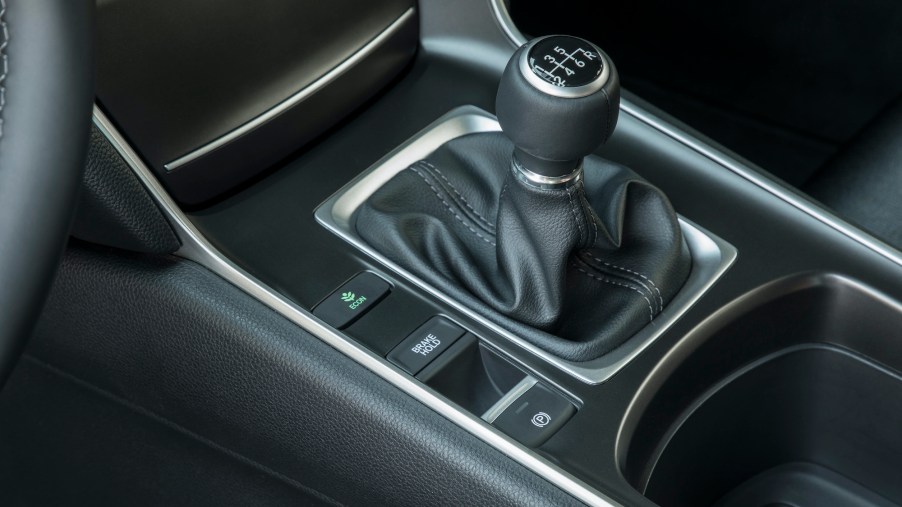

Does Adaptive Cruise Control Work With a Manual Transmission?
Adaptive cruise control has been around for quite a while now and it is even a standard feature in some of the most affordable cars on the market. Adaptive cruise control adds a bit of extra safety and convenience to your day, especially if your car is equipped with an automatic transmission. But what you might not know is that it’s also available on cars with a manual transmission as well. But how does it work?
Adaptive cruise control is not like regular cruise control
At first, it might seem like a manual transmission and adaptive cruise control wouldn’t work well together. We say this because, unlike regular cruise control, adaptive cruise control regulates the car’s speed. And when the car slows down, the RPMs will drop, which would cause a manual transmission car to either bog or stall. But in a car with an automatic transmission, the car will easily slow down and even come to a complete stop with the adaptive cruise control engaged.
So how does it work with a manual transmission ? According to Autotrader, adaptive cruise control in a car with a manual transmission works half as good as one with an automatic because the system will regulate the car’s speed when cruising, but when it’s time to slow the car down or stop, the system will disengage.
“Low-speed follow” is not allowed
Another advantage of having an adaptive cruise control system on a car with an automatic transmission is that the car will actually take care of itself in stop-and-go traffic. When traffic slows down, the system will detect the car in front of you and adjust to its speed, effectively doing the “traffic dance” for you. However, for cars with a manual transmission, this feature is not included since you would have to depress the clutch and shift gears manually in order to keep the car going.
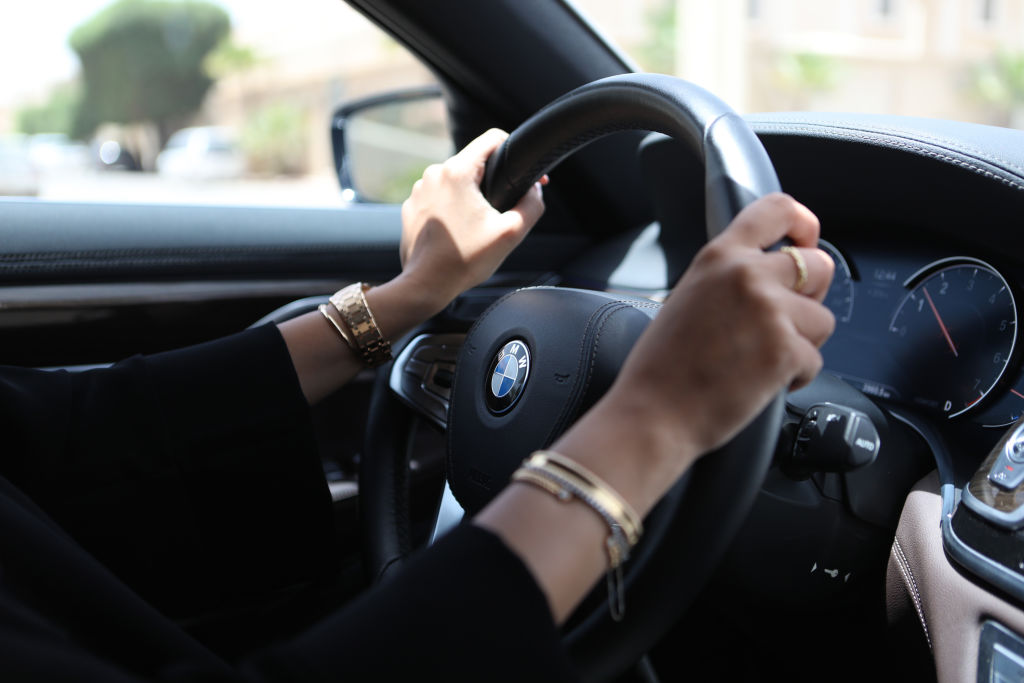
It’s still an effective safety feature to have
You might be wondering why any automaker would include adaptive cruise control on a car with a manual transmission if you’re only able to use half of what the feature has to offer. Considering adaptive cruise control is a safety feature it’s still great to have on any car as it will make the car hit the brakes and slow down if a car were to suddenly cut in front of you or slow down abruptly on the freeway.
Sure, you might not be able to take the stress out of sitting in rush-hour traffic on a Friday, or any day for that matter, but you can at least still set it and forget under normal driving conditions.
However, we must warn you that if you do ever use the adaptive cruise control feature on a car with a manual transmission, remember to stay extra alert when it slows the car down or accelerates it while on the freeway, you might just forget to shift gears. Otherwise, we highly recommend using this feature as it’s extremely useful in almost any driving situation and there’s an added bit of safety as well.
How to Avoid Hitting a Deer With Your Car This Fall

Uber driver busts cheating husband, ‘savage’

Do traffic warnings go on your record?

Can paramedics carry guns in an ambulance?

Joe Santos has been an automotive journalist since 2013 and joined MotorBiscuit in 2020. He writes strongly on consumer advice and new cars, and we consider him an asset to readers looking for guidance in buying and selling autos.
Joe earned a Bachelor’s in Journalism from California State University, Fullerton, and spent years as a Road Test Editor at Kelley Blue Book, after which he served in various automotive-related roles, including an autonomous vehicle trainer for GM, a vehicle sales manager, and an Audi brand specialist.
Joe’s prized possession is a 2008 Honda S2000 in Laguna Blue Pearl, with which he attends local car meets. Joe is also a content creator for LTD Global, a B2B support firm.
Can You Use Cruise Control In A Manual Transmission Car?
- May 23, 2023

If you’re a fan of manual transmission cars, the question of whether or not you can use cruise control may have crossed your mind. The good news is that it is possible to use cruise control in a manual transmission car. Cruise control is a handy feature that has been around for decades and was invented to make long drives more comfortable for drivers. It allows drivers to maintain a constant speed without having to keep their foot on the gas pedal all the time. In this blog, we will discuss how cruise control works in manual cars, the different types of cruise control, and how to use it with your manual car. So, buckle up, and let’s get started!
Table of Contents
What Is Cruise Control? And When Was Cruise Control Invented?
Cruise control is a car feature that maintains a constant speed without using the accelerator pedal. Although patented in 1948, it was not widely available until the 1980s. Inventor Ralph Teetor, who was blind, created it to prevent motion sickness. Almost all cars have cruise control now, with newer models featuring adaptive systems.
How Does Cruise Control Work In Manual Cars?
Cruise control in manual cars operates similarly to automatic cars, allowing the driver to set and maintain a desired speed. However, the system may require manual adjustments when driving on hills or declines. When the car slows down, it will automatically downshift to maintain speed.
Types Of Cruise Control
1. adaptive cruise control.
Adaptive Cruise Control (ACC) is one of the most advanced forms of cruise control that is available in modern cars. The system uses sensors to detect the speed and distance of other vehicles on the road. This ensures that you maintain a safe distance from other vehicles and avoid collisions. ACC adjusts the car’s speed and braking automatically, so you don’t need to worry about constantly adjusting your throttle or brake pedal. It provides smooth acceleration and deceleration, ensuring a comfortable ride for everyone in the car. ACC is typically found in newer cars but can also be retrofitted into older cars as an aftermarket upgrade. It is a standard feature in many SUVs and luxury cars from brands such as Ford and Chrysler.
How does adaptive cruise control work with a manual transmission?
Adaptive cruise control relies on radar or camera sensors to detect the distance between your car and the one in front, automatically adjusting your speed. However, if you have a manual transmission car, you’ll need to disengage the clutch and shift gears yourself. This requires extra attention, so exercise caution when using it and only in ideal conditions.
2. Semi-autonomous Cruise Control
Semi-Autonomous Cruise Control is an electronic system that utilizes sensors to detect both the speed and distance of other vehicles around you. By monitoring these factors, it offers drivers an effortless way to maintain a safe following distance while cruising at a constant speed. This feature can be found as standard on many modern-day suvs like Ford and Chrysler or as an optional add-on for regular cruise control systems. The adaptive cruise control feature is available on some manual transmissions, but it may require additional sensors or technology in older cars. As with any driving aid, always check your car’s manual or consult with professionals before attempting to use it under traffic conditions.
3. A Speed Limiter
A speed limiter is an electronic system that comes in quite handy when you want to keep your vehicle from exceeding the pre-set limit of its cruising speed. This feature is particularly useful if you want to avoid speeding tickets or maintain a constant speed on long drives. A speed limiter is a type of cruise control system that allows you to set a maximum speed for your manual transmission vehicle without having to worry about accidentally going over the desired limit. It should be noted that while using this feature, it’s important to stay alert and follow safe driving practices such as keeping a safe distance from other vehicles on the road and adjusting your throttle, accelerator, and clutch pedals correctly. A Speed Limiter is not just available in modern cars but also in older ones like Ford or Chrysler suvs and manuals as well.
How To Use Cruise Control With A Manual Car
It’s important to note that while most newer cars have standard cruise control, some models come with more advanced features like adaptive cruise control systems that allow you to maintain a safe distance from other vehicles even in heavy traffic conditions. So whether you’re driving an automatic or manual transmission car, make sure you know how your car’s cruise control works before hitting the freeway for those long drives.
Locate The Cruise Control Button
When locating the cruise control button in a manual transmission car, identifying it is crucial. This small yet handy feature is usually found on the steering wheel or dashboard and resembles a speedometer with an arrow pointing towards it. To activate cruise control after locating this button, press it once. Following this step, you can increase your car’s speed through smooth acceleration with aid from the accelerator pedal and set your desired cruising speed by releasing it. The electronic system of your vehicle takes over and maintains this constant speed until you turn off the cruise control or apply brakes.
Reach Desired Highway Speed
To use cruise control in a manual vehicle, it’s important to reach your desired highway speed first. Begin by engaging the cruise control feature either through a button or lever located on your steering wheel. With that done, release your foot from the accelerator pedal and allow your car to maintain a constant speed with the assistance of sensors and other electronic systems. If you need to slow down or stop abruptly due to traffic conditions, simply disengage the standard feature by pressing either the brake or clutch pedal. By utilizing this handy feature on long drives, you can save fuel while cruising at a smooth acceleration and safe distance from other cars on the freeway.
Turn On Cruise Control
When turning on the cruise control feature in a manual transmission vehicle, ensure that your car is traveling at a steady pace and is in the right gear. After reaching the desired speed, activate this handy feature by pressing the “set” button located on the steering wheel. To adjust your cruising speed, use either the “+” or “-” buttons conveniently placed within reach. It’s worth noting that while this feature works smoothly in modern cars, it might not be suitable for certain traffic conditions or older models of vehicles. By incorporating secondary keyterms like ‘accelerator,’ ‘cruise control works,’ ‘throttle,’ and more, one can get a smooth acceleration and maintain a constant speed without having to worry about constantly shifting gears or using the clutch pedal.
Avoid Unnecessary Braking And Shifting
Maintaining a constant speed while using the cruise control feature in a manual car is crucial to ensure maximum efficiency. When engaging this handy feature in a manual transmission vehicle, always make sure to reach your desired speed and set it by pressing the designated button on your steering wheel’s cruise control system. Whenever necessary, remember that downshifting or disengaging the feature is an option if the car begins to slow down abruptly due to traffic conditions or changes in elevation. In addition, cruising at smooth acceleration levels can significantly reduce driver fatigue during extended trips. Lastly, it’s worth keeping in mind that choosing an appropriate gear for your current speed before initiating the regular or adaptive cruise control system can significantly enhance your driving experience.
Watch the road and steer
While using the cruise control feature in a manual car, it is essential to remain alert and attentive towards the road. It would be best if you familiarized yourself with your car’s specific controls and settings before engaging the cruise control system. Always keep both hands on the steering wheel for proper maneuvering of the vehicle, be cautious, and ready to disengage the system when needed. Keep in mind that using cruise control does not replace your driving skills or instincts as a driver. Therefore, always be vigilant while making use of this handy feature.
Frequently Asked Questions
Is cruise control available to manual transmission.
While some manual transmission cars have cruise control, not all do. Those that do work similarly to automatic cars but require additional clutch and gear adjustments. To know if your manual car has this feature, check the manual or ask a mechanic.
Is cruise control only on automatic cars?
Although not all manual transmission cars have cruise control, some models do offer it along with a speed limiter feature that helps maintain a specific speed. It’s important to refer to the car’s owner’s manual to confirm availability. If unavailable, maintaining a constant speed manually or using the speed limiter can be an alternative.
Is cruise control bad for your transmission?
Cruise control is safe for your transmission when used responsibly. It won’t cause damage, but using it on hilly or rough terrain may put additional strain on your transmission. If you have a manual car, you’ll need to shift gears manually while using cruise control.
In conclusion, using cruise control in a manual car is possible, but it requires some additional effort from the driver. It is essential to know the different types of cruise control systems available and how they work to make an informed decision. With the right technique, you can use cruise control on long drives and reduce fatigue. However, it’s crucial to keep in mind that cruise control doesn’t replace attentive driving and steering. Use it responsibly and always keep an eye on the road ahead. Now that you know how to use cruise control in your manual car, hit the road without any worries!
Trending now


Can You Use Cruise Control With Manual Transmission?
Cruise control, even though it has been around for a while, has been one of the best features of a car especially if you are looking at the safety of the vehicle. But while cruise control tends to be a standard feature in cars with automatic transmission, you might wonder if manual cars have it. So, can you cruise control with a manual transmission?
You can cruise control with a manual transmission. It doesn’t work half as well as it does with automatic transmissions as it still regulates the car’s speed when you are cruising. But the system tends to disengage the moment you slow down or when you press the clutch.
In that regard, while cruise control does indeed work with cars with manual transmissions, you shouldn’t expect it to work perfectly at all or even close to how it works on cars with automatic transmissions. Still, having cruise control on a manual car can still be something to be happy about especially when it comes to your overall safety.
Is cruise control available on cars with manual transmissions?
When you look at how cruise control works and how manual transmission cars are basically a thing of the past, you would probably think that they are not compatible with one another. And there is a good reason for that especially when you consider that cruise control works really great on cars with automatic transmissions and how it seemingly should only work on them.
However, what you need to know is that cruise control is indeed available on cars with manual transmissions. Yes, you read that right. Even though it might seem like cruise control and manual transmission don’t seem to go well together, this is still a feature that is very much present in cars with manual transmissions.
The reason why cruise control is still available on manual transmission cars is, of course, for safety and for convenience. You can never really deny the fact that cruise control is very useful when it comes to cruising on an open road especially during long drives as it basically allows you to fix your speed at certain levels. And when applied on a manual transmission car, it becomes quite useful as well especially when you consider how it can be exhausting to keep your car on a steady speed level when you are driving a stick shift car.
Of course, because modern cars now come with electronic speed signals and electronic accelerator signals, it really isn’t difficult to integrate cruise control into cars that come with manual transmissions. Even modern motorbikes also have cruise control nowadays given how useful the feature is for any kind of vehicle.
How does adaptive cruise control work with a manual transmission?
While cruise control may be available on cars with manual transmissions, don’t expect it to work as well as it does on a car with an automatic transmission. In some cases, you would even say that cruise control works only half as well as it does on stick shift cars than it does with an automatic car.
For starters, when you engage the cruise control function on a car with a manual transmission, it will work in a similar manner as it does on a car with an automatic transmission. However, the moment you step on the clutch or when you slow down or come to a full stop, the system will automatically disengage unlike how it stays turned on in a car that runs on an automatic transmission system.
As such, when you have to switch gears, you need to re-engage the cruise control function again. However, this doesn’t seem to be much of a big deal for manual transmission drivers because of how switching gears means you are actually slowing down or speeding up. That naturally means that you actually don’t have to use cruise control.
Meanwhile, when the RPM gets to levels that are too low or too high, the cruise control function automatically disengages as well. However, it won’t disengage if it detects traffic that is slower than you as long as the difference in speeds isn’t that too big. But when the speed difference is so big that you need to downshift, the system will automatically disengage.
Is low-speed follow available on a manual transmission?
No, low-speed follow is not a feature that is available on cars with manual transmission. Low-speed follow may be great for cars running on automatic transmissions but it is close to impossible to integrate it with stick shift cars because of how it will require you to shift your gears a lot when you are driving a car with a manual transmission.
Can you put cruise control in a car that doesn’t have it?
Even if you have an older car that doesn’t have cruise control, you shouldn’t worry because you can still have it added to your car. Yes, that is right. You can have an aftermarket cruise control added to your car regardless of whether it may be manual or automatic if it originally didn’t come with cruise control. And there are plenty of reasons why you should have cruise control in your car.
Long rides will end up becoming more comfortable if you have cruise control. Of course, because of the consistent speeds your car will be running on, it will end up having better mileage. And when you are in the middle of long drives, you will less likely end up getting fatigued when you have cruise control engaged.
Cruise control kit for manual transmission
In case you want cruise control to be added to your car, you can simply buy a cruise control kit and have it installed in your car. This cruise control kit from Rostra is a good choice because of how comparatively affordable it is and how it can be installed in manual transmission cars. However, you would need to buy a separate clutch switch for it to be installed in a car with a manual transmission.
https://www.motorbiscuit.com/does-adaptive-cruise-control-work-with-a-manual-transmission/
https://www.hallmazdamilwaukee.com/blog/do-manual-vehicles-have-adaptive-cruise-control/
YourMotorFixResearcher
Owner of YourMotorFix.com
Learn More...
Should All Your Car Tires Have The Same Pressure?
The tire pressure for cars varies depending on the size and weight of the vehicle, the size of the wheels fitted to the vehicle, and in some instances, the type of tire fitted on the rim. While all...
What To Consider Before Taking New Car On A Road Trip
You just bought a brand-new car and you are excited to take it on a spin. Naturally, you would want to drive it on the road to test out how well it holds up to your standards. But how far should you...
Do Manual Transmission Cars Have Cruise Control?
By: Author Zach Reed
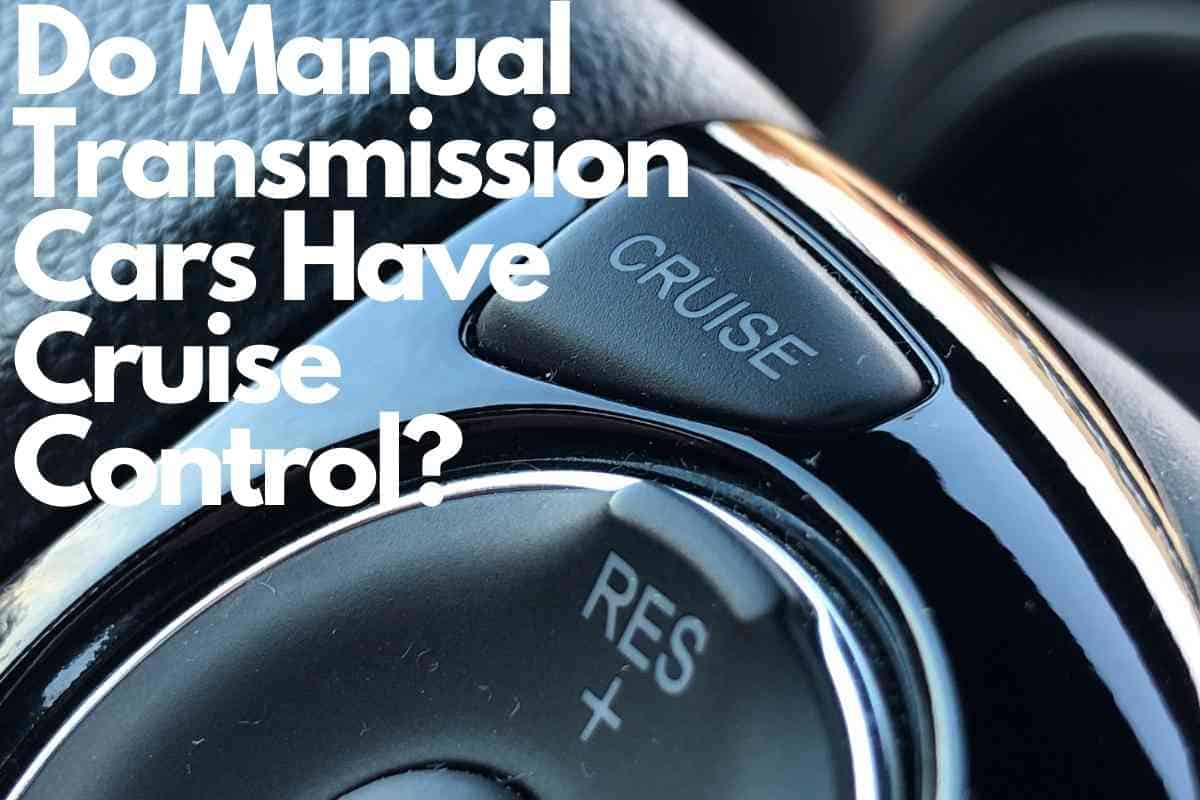
Cruise control is an awesome feature for anyone hitting the highways .
Many people with manual transmission vehicles don’t know if their cars have this magnificent feature.
If you drive on the highway a lot and are considering a manual vehicle, you definitely need to know whether manual transmission cars have cruise control or not.
Manual transmission vehicles often do come with cruise control, although it works a little different from the cruise control in automatic vehicles. Adaptive Cruise Control (ACC) comes standard on most new Manual vehicles and can safely be engaged so long as you plan on remaining in the same gear.
When safely engaged, cruise control is an excellent feature that can ease some of the strain of long car rides.
Knowing what cruise control is and how to engage it, especially in manual transmission vehicles, is crucial to safely operate your vehicle.
Continue reading for all you need to know about manual vehicles and cruise control.
What is Cruise Control In A Stick-Shift Car?
The cruise control is an electronic system that allows a driver to maintain the vehicle’s accelerator at a certain speed even when they take their foot off the gas pedal.
It’s comparable to driving on autopilot. It works best on straight roads with less traffic.
Vehicles with manual transmission require the drive to manually depress the clutch pedal and shift into the gear they need.
If the vehicle has cruise control, this will automatically cause the cruise control to disengage .
Therefore, manual cars will benefit from cruise control on highway/motorway speeds where one gear is used the whole time .
Adaptive cruise control (ACC) has slowly but surely started replacing the standard cruise control . This is because of the number of vehicles on the roads today.
It works in the same way as the normal cruise control but with smart speed management. It speeds up and slows down depending on the speed of the vehicle ahead.
This helps prevent accidents even if the driver didn’t respond fast enough.
Almost all vehicles nowadays are manufactured with adaptive cruise control as a standard feature.
The feature maintains a safe distance from the vehicle ahead and will slow down or stop if the other vehicle does the same.
It will also resume the previous speed if the car in front does the same.
Read on to understand the importance of cruise control especially in manual cars and how it affects your car’s engine.
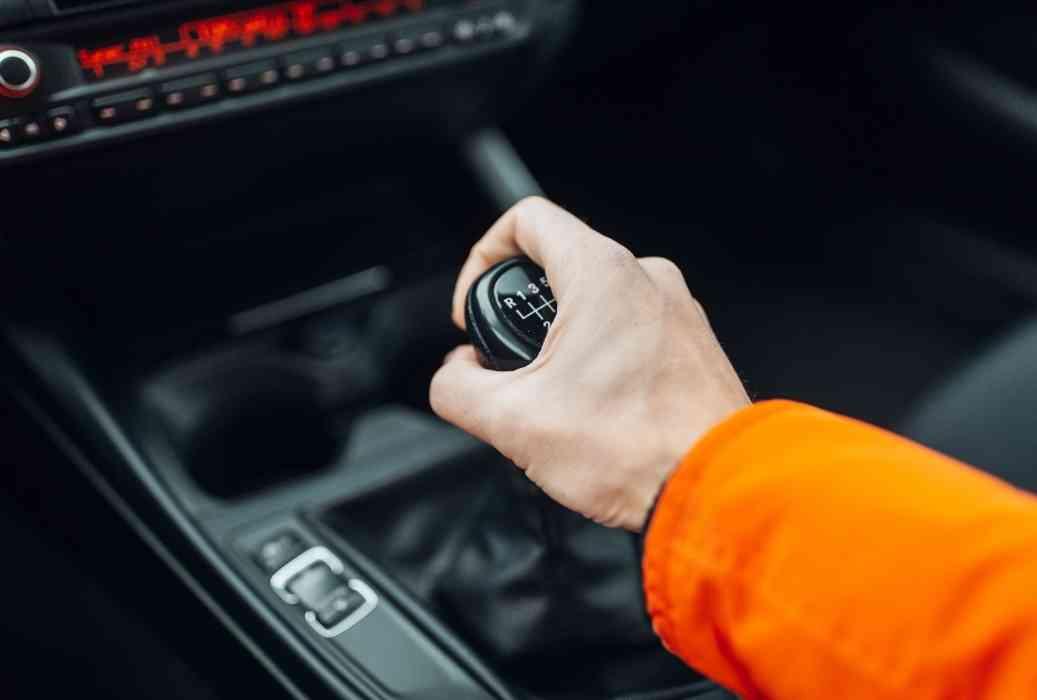
Adaptive Cruise Control on Manual Cars
It’s important to know that the adaptive cruise control disengages every time you hit the clutch.
Therefore, you will turn on cruise control after you have already shifted your gears.
This doesn’t affect you much anyway because it means you are either looking to slow down or speed up.
It also disengages when the RPM is either too high or too low.
If it detects slow traffic ahead of you, it will slow down as long as the speed difference doesn’t lower your RPM too much.
If you need to downshift because your RPM dropped too low, the system will automatically turn off.
Manual cars have a problem with cruise control when going up steep terrains.
You will have to turn off cruise control in such a situation and only restart if after you have adjusted your gears.
Considerations for Using Cruise Control
- It comes in handy during long drives on highways and roads with little to no traffic. It can be helpful to a fatigued driver as well as safely allow the vehicle’s positioning changes.
- It’s useful for drivers who unknowingly increase speeds while driving. It helps them avoid violating speed limits by maintaining a steady speed.
- It’s fuel-efficient as it helps the vehicle maintain a steady speed.
Disadvantages
However, it’s not always going to work out while using cruise control with accidents as an extreme consequence.
There are a number of cons that can occur when cruise control isn’t used correctly. They include:
- Cruise control doesn’t work properly during harsh weather conditions.
- There may be an acceleration round bends that require the vehicle to slow down.
- Rough terrain can mess with the cruise control controls.
- It makes drivers dependable on the feature thus paying less attention to the road when driving. This could lead to serious accidents.
- Inattentive drivers are at risk of Sudden Unintended Acceleration (SUA). This happens when a driver accidentally hits the accelerator when they meant to hit the brakes in an emergency, causing an accident.
Will Cruise Control Mess up Your Engine?
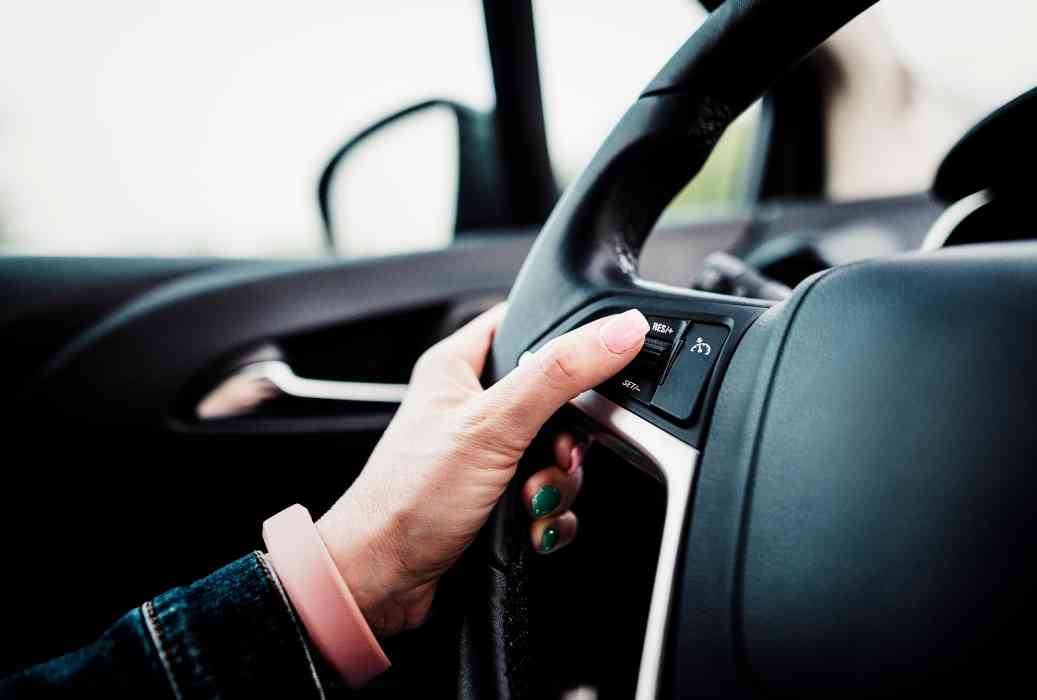
Cruise control won’t affect your engine negatively if your vehicle is automatic . When used correctly, it saves you money in the long run.
Because of its smooth acceleration, your vehicle becomes more fuel-efficient.
In manual cars, however, there might be some lag when going up steep terrains. In the long run, it is possible to cause damage but, in most cases, it’s okay to use.
Cruise Control In Manuals
As discussed above, many car manufacturers are moving from normal cruise control to adaptive cruise control.
Manual cars do have cruise control although it works a little different from the cruise control in automatic vehicles.
Cruise control is useful for long drives and ends up saving you money on fuel and speeding tickets.
Related Posts
- Is It Bad To Start A Car In 2nd Gear?
Hi, I'm the founder of VehicleAnswers.com! Having owned a wide variety of vehicles in my life, I was astounded at how hard it can be to find answers to common automotive questions. Rather than sit idly, I decided to create this website to help others!
Do Manual Transmission Cars Have Cruise Control?

Manual transmissions, often referred to as stick shifts, offer a sense of connection between the driver and the vehicle. However, as technology has advanced, many modern amenities, such as cruise control, have become standard in automatic vehicles, leading to questions about their compatibility with manuals.
Yes, manual transmission cars can have cruise control. Modern systems are designed to maintain a set speed, even in manuals. The driver sets the desired speed, and the system adjusts the throttle to maintain it. If needed, pressing the clutch or brake will disengage the system.
Today’s guide will get into the mechanics of cruise control in manual transmissions, its advantages, challenges, and how to use it effectively.
Mechanics of Cruise Control in Manual Transmission
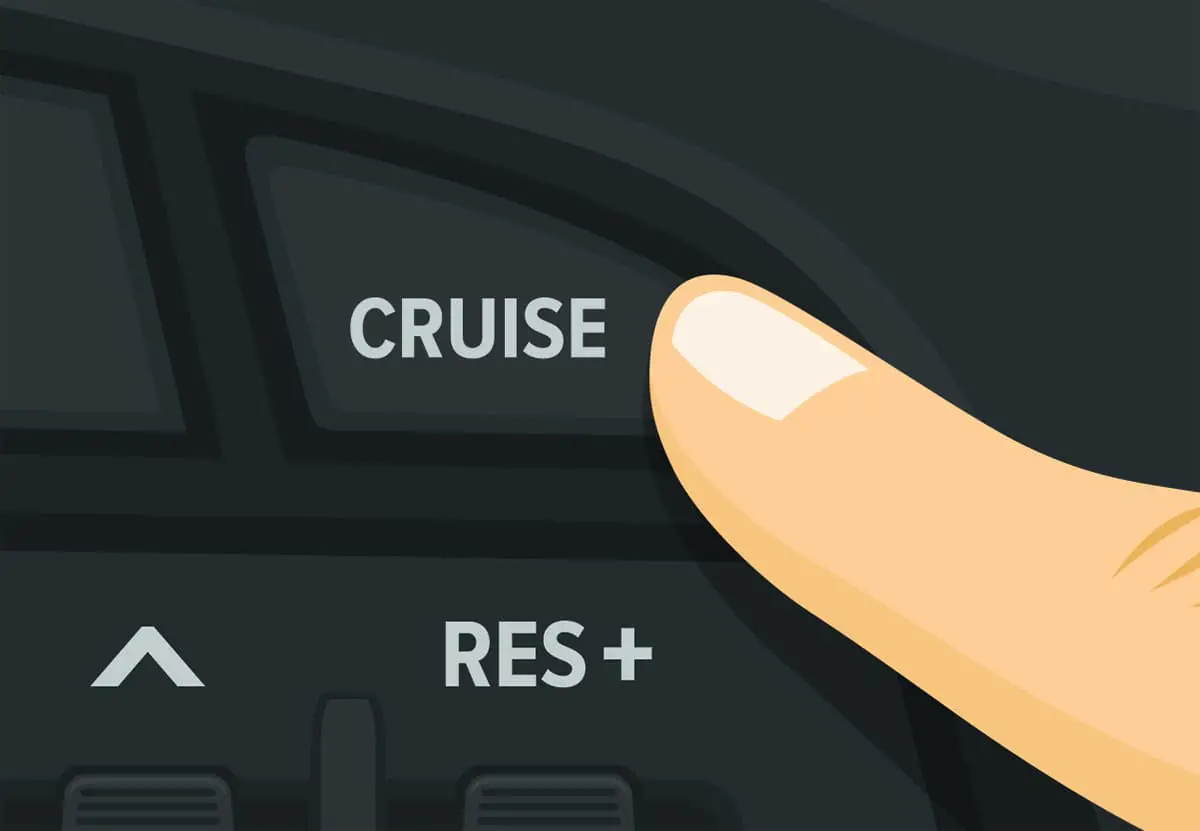
Cruise control, a feature once reserved for top-tier automatic cars, has found its way into manual transmissions . But how does it function in a stick shift?
How Cruise Control Systems Detect Speed
At the heart of any cruise control is a speed sensor. This device measures the car’s speed and sends this data to the control module. In manual cars, this sensor often takes readings from the gearbox or the wheels.
Adjusting Throttle in Manual Cars
To maintain a consistent speed, cruise control adjusts the throttle. In manual vehicles, instead of shifting gears like in automatics , the system manages the engine’s fuel supply. By controlling fuel flow, it keeps the car cruising at the set speed.
The Role of Clutch in Cruise Control Systems
Engaging the clutch while cruise control is active will interrupt the system. Modern designs detect when the clutch is pressed, disengaging the cruise control. This feature prevents engine strain and promotes smooth driving.
Advantages of Cruise Control in Manual Transmission
Once a luxury feature, cruise control has become increasingly popular among manual transmission car owners. But what benefits does this advanced system bring to stick shifts?
1. Fuel Efficiency Improvements
When a driver manually operates a vehicle, speed fluctuations are natural, even when trying to maintain a constant pace. These fluctuations can consume more fuel. Cruise control, by managing speed consistently, reduces these variations, leading to better fuel consumption rates. Over long drives, this can translate to noticeable fuel savings.
2. Enhanced Driving Comfort on Long Journeys
Long drives can be tiring, especially when consistently managing speed on highways. With cruise control, the need to constantly modulate the throttle is reduced. Set the desired speed, activate cruise control, and the system takes over, allowing for a more relaxed driving experience. This is especially handy in areas with minimal traffic and long stretches of road.
3. Safety Boost from Consistent Speeds
Rapid acceleration or deceleration can be risky, especially on highways with dense traffic. Cruise control maintains a steady pace, reducing the chances of sudden speed changes that can be hazardous. Additionally, it allows drivers to keep both hands on the wheel, promoting better control.
Potential Challenges and Limitations
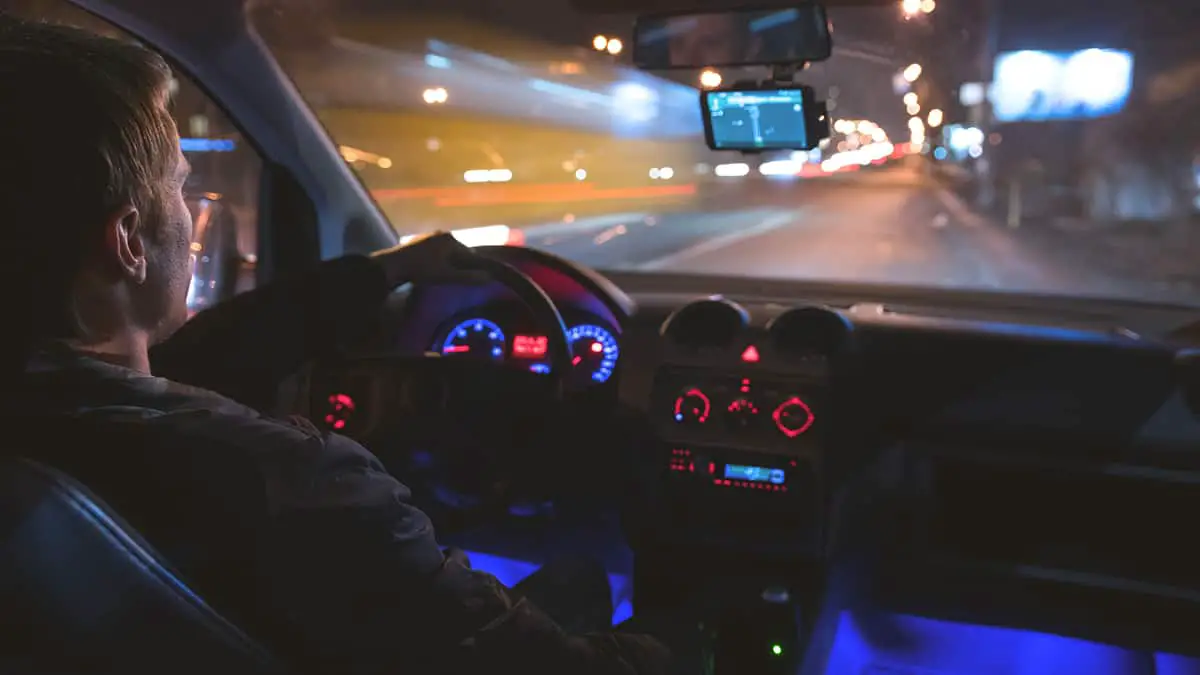
While cruise control in manual transmissions offers numerous advantages, there are some challenges and limitations that come with this feature.
1. Complex Situations
On flat terrains, this isn’t an issue. However, when driving on hilly roads, encountering sharp bends, or sitting still in traffic , maintaining a constant speed might not always be ideal. Ascending a steep hill may strain the engine, while descending can lead to speeds higher than desired.
2. Safety Concerns and Manual Overrides
There are moments when manual intervention becomes necessary, even with cruise control active. In heavy traffic, sudden obstructions, or unpredictable road conditions, relying solely on cruise control might not be safe. In such situations, drivers should be prepared to take immediate control by pressing the brake or clutch to disengage the system.
Steps to Use Cruise Control in a Manual Car
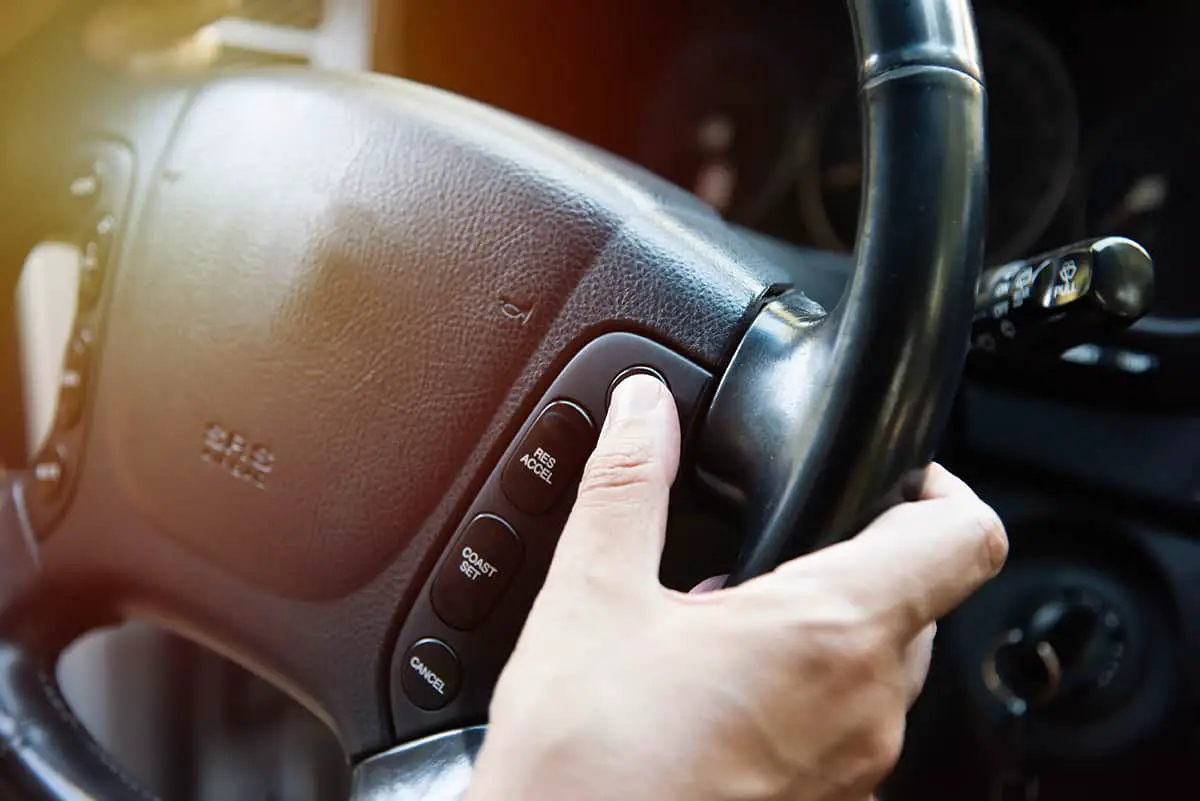
For those who are new to this technology or need a refresher on how to use it effectively in a stick shift, this section provides a step-by-step guide. Please be aware that cruise control systems may vary between cars, so check the paperwork for more details.
Activating Cruise Control
Before you start, make sure the road conditions are suitable. It’s best to use cruise control on open highways or roads with minimal traffic interruptions.
- Drive your car manually to the desired speed.
- Locate the cruise control buttons, usually found on the steering wheel or a nearby stalk.
- Press the “Set” or “On” button, depending on your car’s design. Your vehicle should now maintain the current speed without you pressing the accelerator.
Setting and Adjusting Speed
Once cruise control is active, you have the flexibility to adjust your speed:
- Increasing Speed : Use the “Resume” or “+” button to boost your speed. Some systems might increase the speed incrementally with each press, while others could allow you to hold the button for a continuous increase.
- Decreasing Speed : The “-” button will typically reduce the cruising speed. Like with acceleration, the speed can either drop in small increments or steadily if the button is held.
- Manual Override : If you wish to override the set speed temporarily, press the accelerator. Once you release it, the car will return to the previously set cruising speed.
Disengaging and Manual Overrides
There are a few methods to disengage the cruise control:
- Braking : Applying the brake will instantly turn off cruise control. This is the most common method, especially when needing to reduce speed quickly.
- Pressing the Clutch : In many manual cars, pressing the clutch pedal will also disengage the system, making it useful for gear changes or when anticipating a need for speed reduction.
- Using the Off Button : Most systems will have an “Off” or “Cancel” button. Pressing this will turn off cruise control, allowing you to manage speed manually.
- Shutting Off the Engine : Turning off your car’s engine will also deactivate the cruise control. However, this method is generally not recommended unless in an emergency.
Safety Tips and Best Practices
- Stay Alert : Even with cruise control active, stay attentive. Be ready to take control when the situation demands, such as in heavy traffic or unpredictable road conditions.
- Avoid Wet or Slippery Roads : On wet, icy, or slippery surfaces, it’s best to avoid cruise control. Maintaining a consistent speed in such conditions can increase the risk of skidding.
- Keep Hands on the Wheel : Always keep your hands on the steering wheel. Cruise control manages speed, not steering.
- Regular Maintenance : To ensure your cruise control works flawlessly, make it a part of your regular car maintenance checks. Inspecting the system’s components, such as the speed sensor , can help identify potential issues before they become problematic.
Differences Between Cruise Control in Manual vs. Automatic Transmissions
Related articles.


Do Manual Cars Have Cruise Control? [Full Guide!]
Cruise control is a great feature available on most cars. It is perfect for long distances and stretches of road that are reasonably empty and don’t have a lot of twists and turns. But, today, I will explain if manual cars have cruise control.
Generally speaking, most modern manual cars come with cruise control. However, this feature functions slightly differently on a manual car than on an automatic car. Cruise control on an automatic car will change gears, whereas you need to change gears on a manual car when in cruise control.
Cruise control is reasonably straightforward to use. However, there are a few key things to know about how it works. This article will be a complete guide on everything there is to know about cruise control on manual cars.
How Cruise Control Works on Manual Cars
Many people never use cruise control on their cars even though many vehicles have advanced cruise control features. It’s necessary to change gears often on a manual car, which makes understanding how cruise control works on manual cars. So, here’s a summary and detailed explanation of how cruise control works on manual cars.
Overall, you set the cruise control speed and enable and disable it using the controls on the steering wheel or a lever attached to the steering wheel. It will automatically keep your car at the speed you set. But, you need to manually change gears to stop the engine from stalling.
There are many different versions of cruise control, and they differ based on the make, model, and year of the car. Some will:
- Slow down your car automatically when it senses a vehicle in front of you
- Turn off the cruise control when you press on the brakes
- Turn off the cruise control when your speed drops below a certain speed – usually around 20 to 30 mph (32 to 48 km/h)
- Disable the cruise control when you press the clutch in
A manual car with cruise control that can be enabled at any speed is often called ‘all-range.’ It can be set at any speed and won’t be disabled if your speed drops too low. This is ideally suited to stop-and-go-type situations, such as when you are in heavy traffic. This feature is more common on newer cars – made in 2017 or later.
On older manual cars with cruise control, the cruise control is disabled when you press the clutch. Whereas, on newer car models, you can change gears any time you want. However, some limit how long you can press the clutch in. For example, it will disable the cruise control if you press the clutch for more than 2 seconds.
Modern cars from about 2017, often have an inbuilt feature that will disable the cruise control if the engine gets close to stalling. And many car models will notify you to change gears when it detects the revs are too low for the speed and gear.
What happens if a car in front of you is going slow
Setting the cruise control to just under the speed limit is common. However, cars in front of you can often slow down to take an exit or drive slower than expected.
Many modern manual cars with cruise control have sensors that detect when there is a car in front of you and will automatically slow down. Such as Toyota cars, which have what they call ‘ Dynamic Radar Cruise Control .’ This feature is now standard on most new car makes and models.
However, if a manual car doesn’t have this feature, you need to press on the brakes to slow down. Here’s what happens if you brake when cruise control is on.
Can You Brake on Cruise Control?

Cruise control is designed to keep your car at a constant speed, but all too often, something will happen that will require you to brake, such as a sharp turn or a car pulling out in front of you. So, this is what happens if you brake while the cruise control is on, and if it’s possible.
You can brake on cruise control. Once you have finished braking, the cruise control will accelerate, returning to the set cruise control speed. However, if it’s a manual car and you decelerate, you typically need to shift down a gear or two to stop the engine from stalling.
A car can struggle to accelerate and stall if you decelerate too much. For example, if you are in 5th gear and brake all the way down to 10 mph (16 km/h), the car won’t be able to accelerate in 5th gear at this slower speed.
Therefore, you will need to change down to 2nd or 3rd first, and then change up gears as the cruise control accelerates for you manually.
But, in general, it’s easiest to take it out of cruise control when you need to brake a lot. Then, once you’re in a place where you don’t need to brake as often, you can put it back into cruise control.
Does Cruise Control Change Gears
While cruise control is active, the acceleration and deceleration are controlled by an onboard computer. However, on manual transmission cars, there is no way for the car to change gears itself. So, here’s whether cruise control can change gears on manual and automatic cars.
Typically, cruise control does not change gears on a manual transmission vehicle. Thus, if you need to brake or you enter a very steep hill, you will need to change down gears on a manual transmission. However, the cruise control feature on most automatic vehicles is designed to change gears too.
When you are on a steep hill in the wrong gear, the car can stall, and you will need to brake immediately. Therefore, you should change down gears when your car is struggling to go up a hill.
By comparison, you don’t need to change gears when in cruise control on an automatic car. The one exception is on very steep hills where the onboard computer can’t detect that it’s a very steep hill. In that case, you may need to put it into manual 1st or 2nd to have enough acceleration to make it up a hill.
Similar Posts

8 Reasons Why Battery Is Fully Charged But Car Won’t Start!
Your car’s battery is a vital component for the proper operation of your vehicle. Typically, when…
![cruise control for manual transmission Why Are Cars Called Whips? [Here’s the Truth!]](https://vehicleuniversity.com/wp-content/uploads/2023/01/car-drifting-2021-08-29-13-38-47-utc-768x576.webp)
Why Are Cars Called Whips? [Here’s the Truth!]
A “whip” is a strange word to use for a car. However, it’s common to hear…
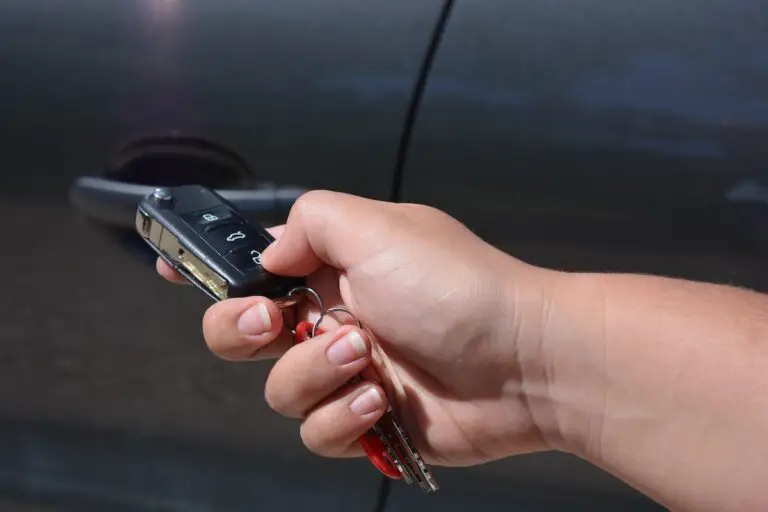
Car Battery Dead and Doors Won’t Lock? Here’s What to Do!
One of the biggest problems people face when the car battery has dies is that the…
![cruise control for manual transmission Does Slamming Car Doors Damage It? [Here’s What to Know!]](https://vehicleuniversity.com/wp-content/uploads/2023/01/hand-of-male-businessman-opening-car-door-2021-08-28-06-42-19-utc-768x513.jpeg)
Does Slamming Car Doors Damage It? [Here’s What to Know!]
Vehicles undergo numerous stress tests to ensure they can withstand various conditions in the real world….
![cruise control for manual transmission How to Recondition a Car Battery? [Full Guide!]](https://vehicleuniversity.com/wp-content/uploads/2023/01/Car-Battery-Corrosion-on-terminals-768x480.webp)
How to Recondition a Car Battery? [Full Guide!]
Our cars rely heavily on their batteries, with this compact box of energy being the lifeblood…
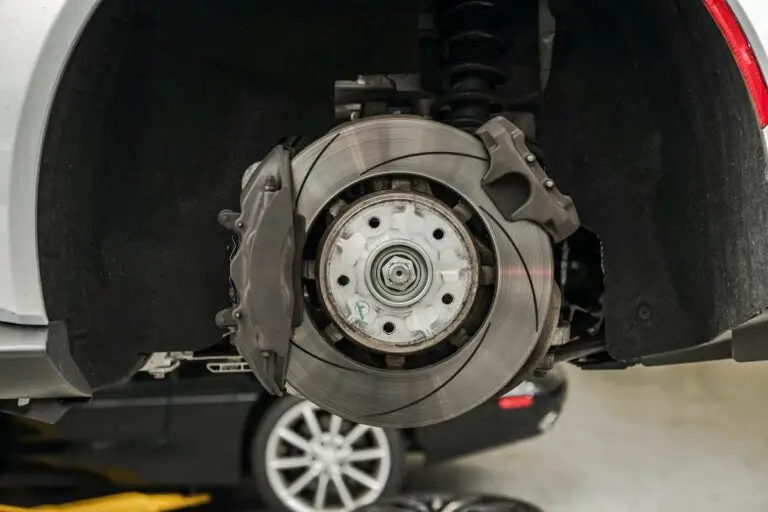
Do Cars Have Front And Rear Brakes? Here’s What to Know!
The braking system on modern cars is packed full of innovations to make the car safer…
Leave a Reply Cancel reply
You must be logged in to post a comment.

We're sorry for any inconvenience, but the site is currently unavailable.

Do Manual Cars Have Cruise Control? (An Accurate Answer)
If you need to drive on the highways regularly, then cruise control can be a very fruitful feature for you. All of the automated transmitted cars have this feature, but for manually transmitted cars, the scenario is different.
Many manual transmission car owners aren’t aware of whether their cars can use this great feature on their cars or not. Do manual cars have cruise control ?
Well, nowadays 90% of new manual cars come with Adaptive Cruise Control (ACC) facility. It acts differently, but you can avail of this feature as long as you don’t change the gear.
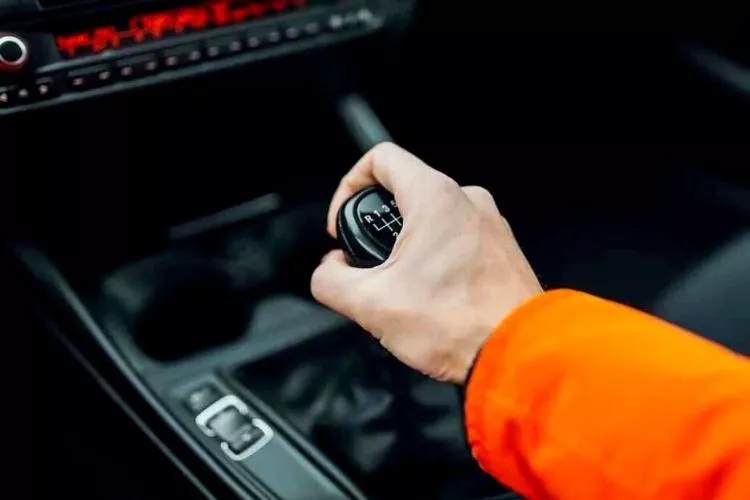
Do manual cars have cruise control?
If you buy a new car that comes with a manual transmission, then there is a high chance of getting the cruise control feature. But you need to confirm it from the company. The Cruise control feature operates differently than that of the automatic cars. Adaptive Cruise Control (ACC) is present in most new manual cars.
You can use it very safe as long as you don’t need to change the gear. For driving on the highways, this feature is very useful. It helps the car to run in a less stressful way.
To use Cruise control while driving, you need to have perfect knowledge about what type of Cruise control is present in your car and how to use it. You need to learn everything related to this mechanism.
Only then can you apply Cruise control smoothly while driving on the highways.
What is cruise control in a manual car?
Cruise control is an advanced electrical feature that is present in most recently launched cars. This feature helps the accelerator to offer the best possible speed to the car, even if your foot is not on the accelerator.
In manual cars, you need to press the clutch and shift gears according to the need. But if you use cruise control, especially when you are on the highways, then you only need to use a single gear for the entire period.
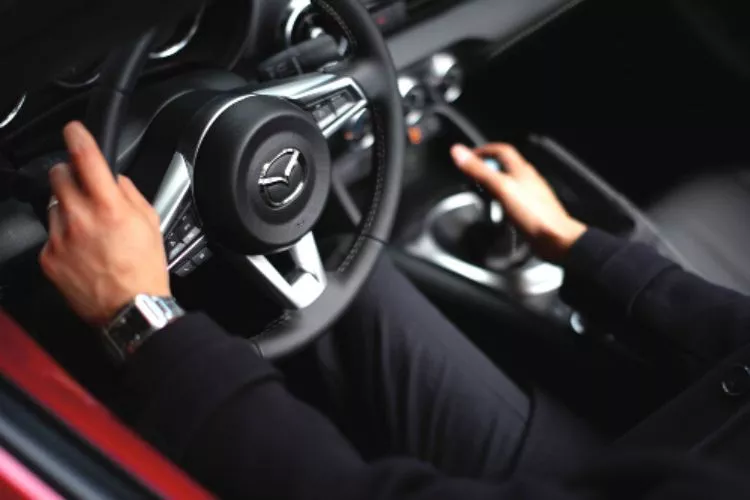
In recent times, Adaptive cruise control (ACC) has occupied the entire market of standard cruise control. ACC is nothing but an advanced version of the SCC. Having advanced mechanisms, ACC can offer better smart speed management.
One thing that is good to remember is that whenever you hit the clutch, the ACC gets turned off. On the same gear, you can’t turn on the cruise control again; you need to change the gear first. ACC also stops when the car’s RPM is too low or it is too high. Cruise control doesn’t work properly in the up-hills.
How safe is cruise control?
On long drives, cruise control helps a lot. But, before applying it, you need to learn how to use it properly. As long as you use cruise control properly, this is 100% safe.
You need to avoid it when there is snow, sleet or if it is raining . And you need to pay special attention to the road. So, you need to properly learn the applying method and the condition when you have to apply it.
Does cruise control save gas?
There is a lot of uncertainty about whether cruise control saves gas or not. A Canadian study found that cruise control decreases the fuel efficiency of a car by 20% if its speed gets changed every 18 seconds, and the speed varies between 46 and 56 miles.
But in some conditions, cruise control is better and more fuel-efficient than others.
How do you know if your car has cruise control?
The easiest way to know whether your car has cruise control or not is to look for the cruise control panel.
In most cases, this control panel is placed on the indicator stalk of the vehicle or near its steering.
To turn on cruise control, you just need to press the specific switch on which the mark of cruise control is made.
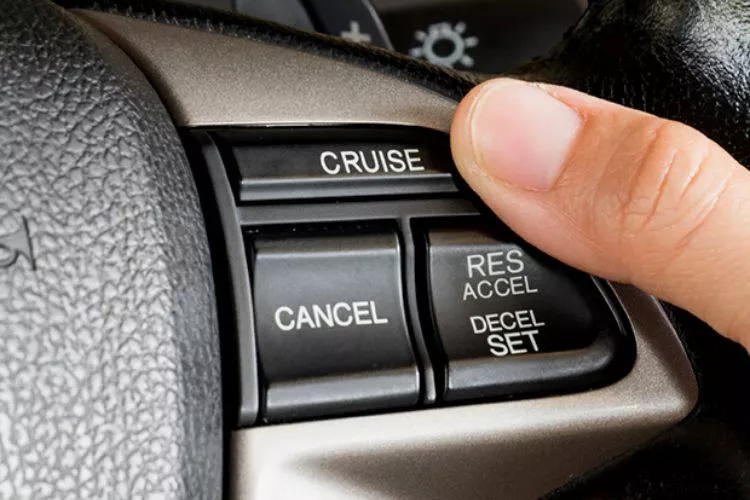
The mark of cruise control looks like a speedometer with an arrow. If you found this button, then the cruise control feature is attached to your vehicle.
What is the difference between cruise control and adaptive cruise control?
Although the main task of cruise control and adaptive cruise control is the same, there are some differences between them. Below, we are mentioning some of them.
In cruise control, you are not able to calculate the distance and speed of the other cars. So the car can’t automatically increase or reduce its speed. But, in ACC, you can easily calculate the distance and speed of the other cars. And it can help itself to reduce the speed, depending upon needs and other circumstances.
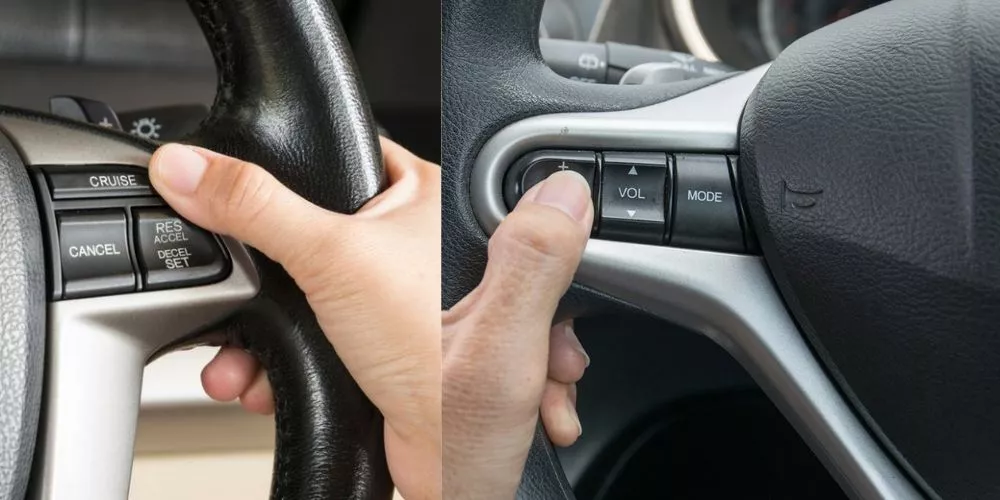
In cruise control, the speed of the car is set by the driver, and he is soulfully responsible for running the vehicle automatically. On the other hand, in ACC, you have to set a constant speed depending on the other car’s speed. Sensors are used in cruise control to calculate the throttle’s position. Radars are used in ACC.
Cruise control is the older version, and it is found in most of the oldest cars. ACC is the updated version, and it is used in modern new models. For high-speed driving, cruise control is a better option. For slow-moving traffic, adaptive cruise control is preferred.
Frequently Asked Questions (FAQs)
Do manual cars have adaptive cruise control.
Yes, most of the manual cars of this time have adaptive cruise control. The mechanism and the application process of it are completely different. You need to learn it properly before using it on the highways.
How much does it cost to add Adaptive Cruise Control?
ACC is the advanced version of the standard cruise control mechanism. ACC uses advanced and high-tech configurations, which makes it expensive. On average, to install ACC in your car, you need to spend somewhere between $2000 to $2500. From model to model the car, this pricing varies.
Does cruise control work in manual cars?
The cruise control facility is available for manually transmitted cars. But it doesn’t perform as smoothly as an automatic transmission. The performance ratio of cruise control for manual cars and automatic cars is 1:2.
Is speed control the same as cruise control?
Apparently, not. These two are completely different. A speed controller prevents a car from reaching a certain speed. But in cruise control, the driver needs to set the speed at which the vehicle has to run.
In cruise control, the control is in the driver’s hand; but a speed controller is completely a mechanical mark. If you have installed it in your car, then the car’s engine will prevent the car from reaching that speed.
Cruise Control is a very useful feature. It makes driving easier, especially while you are driving at a high, constant speed. When driving a car on a highway, you can feel how fruitful this feature is. The manually transmitted cars also have this feature, but in automatic cars, it works more smoothly.
About The Author

David Miller
Related posts.
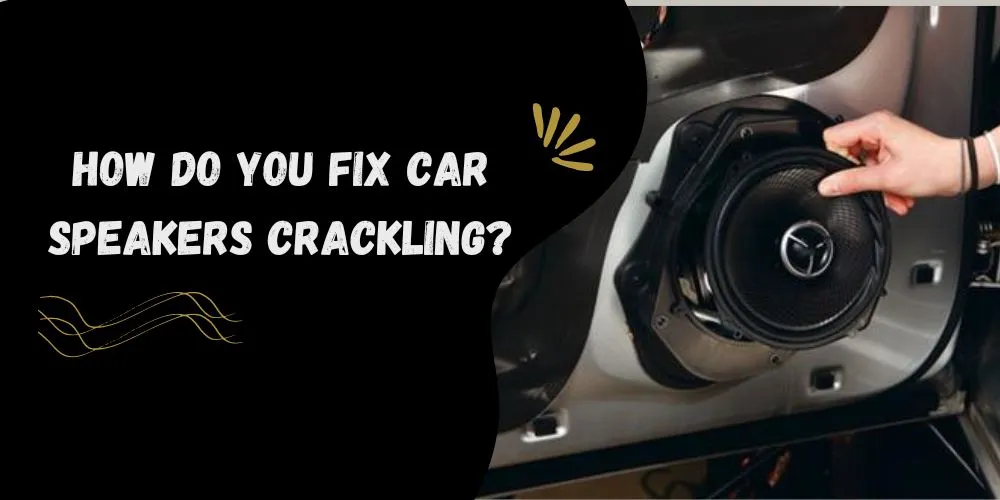
How to Fix Car Speakers Crackling In 10 Easy Ways
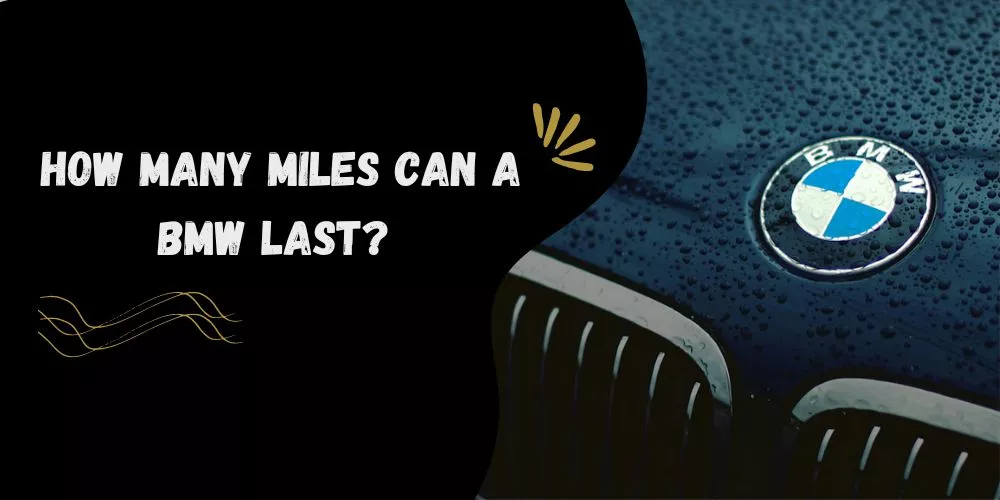
How Many Miles Can a BMW Last? (My Best Guess)
Leave a comment cancel reply.
Your email address will not be published. Required fields are marked *
Save my name, email, and website in this browser for the next time I comment.
- Contacting Us
Introduction
- About This Publication
- Using This Publication
Symbols Glossary
- Symbols Used on Your Vehicle
- Data Privacy
- Service Data
- Settings Data
- Connected Vehicle Data
- Mobile Device Data
- Emergency Call System Data - Vehicles With: Emergency Assistance
Environment
- Protecting the Environment
Visual Search
Steering wheel.
- Instrument Panel
- Vehicle Interior
- Front Exterior - Base, Convertible
- Front Exterior - Base, Coupe
- Front Exterior - Dark Horse
- Front Exterior - GT, Convertible
- Front Exterior - GT, Coupe
- Rear Exterior - Base, Convertible
- Rear Exterior - Base, Coupe
- Rear Exterior - Dark Horse
- Rear Exterior - GT, Convertible
- Rear Exterior - GT, Coupe
Child Safety
- Child Safety Precautions
Child Restraint Anchor Points
- What Are the Child Restraint Anchor Points
- Locating the Child Restraint Lower Anchor Points
- Locating the Child Restraint Top Tether Anchor Points
Child Restraints
- Child Restraint Position Information
- Child Restraints Recommendation
Installing Child Restraints
- Using Seatbelts
- Using Lower Anchors and Tethers for Children
- Combining the Seatbelt and Lower Anchors for Attaching Child Restraints
- Using Tether Straps
- Booster Seats
- Seatbelt Precautions
- Fastening and Unfastening the Seatbelts
Sensitive Locking Mode
- What is Sensitive Locking Mode
- How Does Sensitive Locking Mode Work
Automatic Locking Mode
- What Is Automatic Locking Mode
- When to Use Automatic Locking Mode
- Engaging Automatic Locking Mode
- Disengaging Automatic Locking Mode
- Adjusting the Seatbelts During Pregnancy
Seatbelt Reminder
- How Does the Seatbelt Reminder Work
- Seatbelt Reminder Indicators
- Seatbelt Reminder Audible Warnings
- Switching the Seatbelt Reminder On and Off
- Checking the Seatbelts
- Seatbelt Extensions
Personal Safety System™
- What Is the Personal Safety System
- How Does the Personal Safety System Work
- Personal Safety System Components
- How Do the Front Airbags Work
- How Do the Side Airbags Work
- How Do the Knee Airbags Work
- How Does the Safety Canopy™ Work - Coupe
- Airbag Precautions
- Properly Adjusting the Driver and Front Passenger Seats
- Children and Airbags
Front Passenger Sensing System
- What Is the Front Passenger Sensing System
- How Does the Front Passenger Sensing System Work
- Front Passenger Sensing System Precautions
- Front Passenger Sensing System Indicators
- Crash Sensors and Airbag Indicator
- Disposing of Airbags
- What Is 911 Assist
- How Does 911 Assist Work
- Emergency Call Requirements
- Emergency Call Limitations
- Keys and Remote Controls
- Remote Control Limitations
- Using the Remote Control
- Removing the Key Blade
- Sounding the Panic Alarm
- Locating Your Vehicle
- Changing the Remote Control Battery
- Replacing a Lost Key or Remote Control
- Programming the Remote Control
- Keys and Remote Controls Audible Warnings
Remote Rev (If Equipped)
- What is Remote Rev
- Remote Rev Limitations
- Using Remote Rev
Keys and Remote Controls – Troubleshooting
- Keys and Remote Controls – Information Messages
Doors and Locks
Operating the doors from outside your vehicle.
- Unlocking and Locking the Doors Using the Remote Control
- Unlocking and Locking the Doors Using the Key Blade
Operating the Doors From Inside Your Vehicle
- Unlocking and Locking the Doors Using the Central Locking
- Opening the Doors From Inside Your Vehicle
- What Is Autounlock
- Autounlock Requirements
- Switching Autounlock On and Off
- What Is Autolock
- Autolock Requirements
- What Is Mislock
- Mislock Limitations
- Switching Mislock On and Off
- Doors and Locks Audible Warnings
Doors and Locks – Troubleshooting
- Doors and Locks – Warning Lamps
- Doors and Locks – Information Messages
- Doors and Locks – Frequently Asked Questions
Keyless Entry
- Keyless Entry Limitations
- Keyless Entry Settings
- Using Keyless Entry
Easy Entry and Exit
- How Does Easy Entry and Exit Work
- Switching Easy Entry and Exit On and Off
Passive Anti-Theft System
- What Is the Passive Anti-Theft System
- How Does the Passive Anti-Theft System Work
Anti-Theft Alarm System
- What Is the Anti-Theft Alarm System
- How Does the Anti-Theft Alarm System Work
- What Is the Perimeter Alarm
- What Are the Interior Sensors (If Equipped)
- What Are the Inclination Sensors (If Equipped)
- Arming the Anti-Theft Alarm System
- Disarming the Anti-Theft Alarm System
Anti-Theft Alarm System Settings (If Equipped)
- What are the Alarm Security Levels
- Setting the Alarm Security Level
- What Is Ask on Exit
- Switching Ask on Exit On and Off
Security – Troubleshooting
- Security – Information Messages
- Security – Frequently Asked Questions
- Using the Controls on the Steering Wheel
- Adjusting the Steering Wheel
- Switching the Heated Steering Wheel On and Off (If Equipped)
Wipers and Washers
- Wiper Precautions
- Switching Windshield Wipers On and Off
- What Are Autowipers
- Autowipers Settings
- Adjusting the Sensitivity of the Rain Sensor
- Checking the Wiper Blades
- Replacing the Front Wiper Blades
- Washer Precautions
- Using the Windshield Washer
- Switching the Courtesy Wipe On and Off
- Adding Washer Fluid
- Washer Fluid Specification
Wipers and Washers – Troubleshooting
- Wipers and Washers – Warning Lamps
- Wipers and Washers – Frequently Asked Questions
Exterior Lighting
- Exterior Lighting Control
- Using the High Beam Headlamps
- Switching Headlamp Exit Delay On and Off
- Headlamp Indicators
Headlamps – Troubleshooting
- Headlamps – Frequently Asked Questions
- What Are Autolamps
- Autolamp Settings
Exterior Lamps
- Using the Turn Signal Lamps
- Switching the Daytime Running Lamps On and Off - Vehicles With: Configurable Daytime Running Lamps
- Switching the Daytime Running Lamps On and Off - Vehicles With: Daytime Running Lamps (DRL) (If Equipped)
- Switching Welcome Lighting On and Off
- Exterior Lamp Indicators
- Exterior Lamps On Audible Warning
Automatic High Beam Control
- How Does Automatic High Beam Control Work
- Automatic High Beam Control Precautions
- Automatic High Beam Control Requirements
- Automatic High Beam Control Limitations
- Switching Automatic High Beam Control On and Off
- Automatic High Beam Control Indicators
- Overriding Automatic High Beam Control
Automatic High Beam Control – Troubleshooting
- Automatic High Beam Control – Information Messages
Interior Lighting
- Switching All of the Interior Lamps On and Off
- Switching the Front Interior Lamps On and Off
Interior Lamp Function
- What Is the Interior Lamp Function
- Switching the Interior Lamp Function On and Off
- Adjusting the Instrument Panel Lighting Brightness
Ambient Lighting (If Equipped)
- Switching Ambient Lighting On and Off
Interior Lighting – Troubleshooting
- Interior Lighting – Frequently Asked Questions
- Opening and Closing the Windows - Convertible
- Opening and Closing the Windows - Coupe
Global Opening
- What Is Global Opening
- Using Global Opening
- Switching Global Opening On and Off
Window Bounce-Back
- What Is Window Bounce-Back
- Overriding Window Bounce-Back
Interior Mirror
- Interior Mirror Precautions
Auto-Dimming Interior Mirror (If Equipped)
- What Is the Auto-Dimming Interior Mirror
- Auto-Dimming Interior Mirror Limitations
Exterior Mirrors
- Adjusting the Exterior Mirrors
- Folding the Exterior Mirrors
Auto-Dimming Exterior Mirror (If Equipped)
- What Is the Auto-Dimming Exterior Mirror
Instrument Cluster
- Instrument Cluster Overview
- Speedometer
- What Is the Fuel Gauge
- Fuel Gauge Limitations
- Locating the Fuel Filler Door
- What Is the Low Fuel Reminder
- What Is Distance to Empty
- Engine Coolant Temperature Gauge
- What Are the Instrument Cluster Warning Lamps
- Instrument Cluster Warning Lamps
- What Are the Instrument Cluster Indicators
- Instrument Cluster Indicators
Instrument Cluster Display
- Using the Instrument Cluster Display Controls
- Customizing the Instrument Cluster Display
Personalized Settings
- Changing the Language
- Changing the Measurement Unit
- Changing the Temperature Unit
- Changing the Tire Pressure Unit
Trip Computer
- Accessing the Trip Computer
- Resetting the Trip Computer
- Configuring the Trip Computer
Remote Start (If Equipped)
- What Is Remote Start
- Remote Start Precautions
- Remote Start Limitations
- Enabling Remote Start
- Remotely Starting and Stopping the Vehicle
- Extending the Remote Start Duration
- Remote Start Settings
Climate Control - Vehicles With: Dual Automatic Temperature Control (DATC)
- Identifying the Climate Control Unit
- Switching Climate Control On and Off
- Switching Recirculated Air On and Off
- Switching Air Conditioning On and Off
- Switching Defrost On and Off
- Switching Maximum Defrost On and Off
- Switching Maximum Cooling On and Off
- Switching the Heated Rear Window On and Off
- Setting the Blower Motor Speed
- Switching the Heated Mirrors On and Off (If Equipped)
- Setting the Temperature
- Directing the Flow of Air
- Switching Auto Mode On and Off
- Auto Mode Indicators
- Switching Dual Mode On and Off
- Climate Control Hints
Climate Control - Vehicles With: Electronic Automatic Temperature Control (EATC)
- Switching the Heated Mirrors On and Off
Interior Air Quality
- What Is the Cabin Air Filter
- Locating the Cabin Air Filter
- Replacing the Cabin Air Filter
Front Seats
- Front Seat Precautions
- Sitting in the Correct Position
Manual Seats
- Head Restraint Components
- Adjusting the Head Restraint
- Removing the Head Restraint
- Installing the Head Restraint
- Moving the Seat Backward and Forward
- Adjusting the Seat Backrest
- Adjusting the Seat Height
- Accessing the Rear Seats
Power Seats (If Equipped)
- Adjusting the Head Restraint - Vehicles With: Front 4-Way Head Restraints
- Adjusting the Head Restraint - Vehicles With: Front Fixed Head Restraints
- Adjusting the Lumbar Support
Heated Seats (If Equipped)
- Heated Seat Precautions
- Switching the Heated Seats On and Off
Ventilated Seats (If Equipped)
- Ventilated Seat Precautions
- Switching the Ventilated Seats On and Off
Rear Seats - Coupe
- Folding the Seat Backrest
- Unfolding the Seat Backrest
Rear Occupant Alert System
- What is the Rear Occupant Alert System
- How Does the Rear Occupant Alert System Work
- Rear Occupant Alert System Precautions
- Rear Occupant Alert System Limitations
- Rear Occupant Alert System Settings
- Rear Occupant Alert System Indicators
- Rear Occupant Alert System Audible Warnings
Memory Function (If Equipped)
- How Does the Memory Function Work
- Memory Function Precautions
- Locating the Memory Function Buttons
- Saving a Preset Position
- Recalling a Preset Position
Garage Door Opener (If Equipped)
- Garage Door Opener Introduction
- Garage Door Opener Precautions and Frequencies
- Programming the Garage Door Opener
- Garage Door Opener Additional Assistance
- Locating the USB Ports
- Playing Media Using the USB Port
- Charging a Device
Power Outlet
- What Is the Power Outlet
- Power Outlet Precautions
- Locating the Power Outlets
Wireless Accessory Charger
- What Is the Wireless Accessory Charger
- Wireless Accessory Charger Precautions
- Locating the Wireless Accessory Charger
- Charging a Wireless Device
Cup Holders
- Cup Holder Precautions
Glove Compartment
- Opening the Glove Compartment
Center Console
- Opening the Center Console
- Locking the Center Console (If Equipped)
Glasses Holder
- Locating the Glasses Holder
Starting and Stopping the Engine
- Starting and Stopping the Engine – Precautions
- Push Button Ignition Switch
Starting the Engine
- Starting a Gasoline Engine - Manual Transmission
- Starting a Gasoline Engine - Automatic Transmission
- Restarting the Engine After Stopping It
Engine Block Heater (If Equipped)
- Engine Block Heater Precautions
- How Does the Engine Block Heater Work
- Using the Engine Block Heater
Stopping the Engine
- Stopping the Engine When Your Vehicle is Stationary - Manual Transmission
- Stopping the Engine When Your Vehicle is Stationary - Automatic Transmission
- Stopping the Engine When Your Vehicle is Moving - Manual Transmission
- Stopping the Engine When Your Vehicle is Moving - Automatic Transmission
Automatic Engine Stop
- What Is Automatic Engine Stop
- How Does Automatic Engine Stop Work
- Switching Automatic Engine Stop On and Off
- Overriding Automatic Engine Stop
- Accessing the Passive Key Backup Position
Starting and Stopping the Engine – Troubleshooting
- Starting and Stopping the Engine – Warning Lamps
- Starting and Stopping the Engine – Information Messages
- Starting and Stopping the Engine – Frequently Asked Questions
Auto-Start-Stop
- What Is Auto-Start-Stop
- Auto-Start-Stop Precautions - Manual Transmission
- Auto-Start-Stop Precautions - Automatic Transmission
- Switching Auto-Start-Stop On and Off
- Stopping the Engine - Manual Transmission
- Stopping the Engine - Automatic Transmission
- Restarting the Engine - Manual Transmission
- Restarting the Engine - Automatic Transmission
- Auto-Start-Stop Indicators
Auto-Start-Stop – Troubleshooting
- Auto-Start-Stop – Information Messages - Manual Transmission
- Auto-Start-Stop – Information Messages - Automatic Transmission
- Auto-Start-Stop – Frequently Asked Questions
Fuel and Refueling
- Fuel and Refueling Precautions
Fuel Quality
- Selecting the Correct Fuel
- Locating the Fuel Filler Funnel

Running Out of Fuel
- Filling a Portable Fuel Container
- Adding Fuel From a Portable Fuel Container
- Refueling System Overview
- Refueling Your Vehicle
- Fuel Tank Capacity
Fuel and Refueling – Troubleshooting
- Fuel and Refueling – Warning Lamps
- Fuel and Refueling – Information Messages
Catalytic Converter
- What Is the Catalytic Converter
- Catalytic Converter Precautions
Catalytic Converter – Troubleshooting
- Catalytic Converter – Warning Lamps
Manual Transmission (If Equipped)
- Manual Transmission Precautions
- Shifting Into Reverse
- Checking the Manual Transmission Fluid Level
- Checking the Clutch Fluid Level
- Manual Transmission Fluid Capacity and Specification
- Clutch Fluid Capacity and Specification
Automatic Transmission
- Automatic Transmission Precautions
Automatic Transmission Positions
- Reverse (R)
- Neutral (N)
- Low (L) - Vehicles Without: Paddle Shifters
- Manual (M) - Vehicles With: Paddle Shifters
- Shifting Your Vehicle Into Gear - Vehicles Without: Paddle Shifters
- Shifting Your Vehicle Into Gear - Vehicles With: Paddle Shifters
- Automatic Transmission Position Indicators - Vehicles Without: Paddle Shifters
- Automatic Transmission Position Indicators - Vehicles With: Paddle Shifters
- Automatic Transmission Audible Warnings
Manually Shifting Gears
- Shifting Using the Paddle Shifters (If Equipped)
Brake Shift Interlock
- What Is Brake Shift Interlock
- Brake Shift Interlock Precautions
- Using Brake Shift Interlock
- Limited Slip Differential
- Brake Precautions
Anti-Lock Braking System
- Anti-Lock Braking System Limitations
- Anti-Lock Braking System Indicators
- Brake Over Accelerator
- Locating the Brake Fluid Reservoir
- Checking the Brake Fluid
- Brake Fluid Specification
Brakes – Troubleshooting
- Brakes – Warning Lamps
- Brakes – Information Messages
- Brakes – Frequently Asked Questions
Electric Parking Brake
- What Is the Electric Parking Brake
- Applying the Electric Parking Brake - Manual Transmission, Vehicles Without: EcoBoost™ Performance Package/GT Performance Package
- Applying the Electric Parking Brake - Manual Transmission, Vehicles With: EcoBoost™ Performance Package/GT Performance Package
- Applying the Electric Parking Brake - Automatic Transmission, Vehicles Without: EcoBoost™ Performance Package/GT Performance Package
- Applying the Electric Parking Brake - Automatic Transmission, Vehicles With: EcoBoost™ Performance Package/GT Performance Package
- Applying the Electric Parking Brake in an Emergency - Vehicles Without: EcoBoost™ Performance Package/GT Performance Package
- Applying the Electric Parking Brake in an Emergency - Vehicles With: EcoBoost™ Performance Package/GT Performance Package
- Manually Releasing the Electric Parking Brake - Vehicles Without: EcoBoost™ Performance Package/GT Performance Package
- Manually Releasing the Electric Parking Brake - Vehicles With: EcoBoost™ Performance Package/GT Performance Package
- Automatically Releasing the Electric Parking Brake
- Electric Parking Brake Audible Warning
- Releasing the Electric Parking Brake if the Vehicle Battery Has Run Out of Charge
Electric Parking Brake – Troubleshooting
- Electric Parking Brake – Warning Lamps
- Electric Parking Brake – Information Messages - Vehicles Without: EcoBoost™ Performance Package/GT Performance Package
- Electric Parking Brake – Information Messages - Vehicles With: EcoBoost™ Performance Package/GT Performance Package
Cross Traffic Braking
- What Is Cross Traffic Braking
- How Does Cross Traffic Braking Work
- Cross Traffic Braking Precautions
- Switching Cross Traffic Braking On and Off
- Overriding Cross Traffic Braking
- Cross Traffic Braking Indicators
Cross Traffic Braking – Troubleshooting
- Cross Traffic Braking – Information Messages
- Cross Traffic Braking – Frequently Asked Questions
Hill Start Assist
- What Is Hill Start Assist
- How Does Hill Start Assist Work
- Hill Start Assist Precautions
- Switching Hill Start Assist On and Off - Manual Transmission
- Switching Hill Start Assist On and Off - Automatic Transmission
Hill Start Assist – Troubleshooting
- Hill Start Assist – Information Messages
Auto Hold (If Equipped)
- How Does Auto Hold Work
- Switching Auto Hold On and Off
- Using Auto Hold
- Auto Hold Indicators
Traction Control
- What Is Traction Control
- How Does Traction Control Work
- Switching Traction Control On and Off
- Traction Control Indicator
Traction Control – Troubleshooting
- Traction Control – Warning Lamps
Stability Control
- How Does Stability Control Work
- Switching Stability Control On and Off
- Stability Control Indicator
Stability Control – Troubleshooting
- Stability Control – Information Messages
Electric Power Steering
- How Does Electric Power Steering Work
- Electric Power Steering Precautions
Steering – Troubleshooting
- Steering – Warning Lamps
- Steering – Information Messages
Parking Aids (If Equipped)
- Parking Aid Precautions
- Switching Parking Aid On and Off
Rear Parking Aid
- What is the Rear Parking Aid
- Rear Parking Aid Limitations
- Locating the Rear Parking Aid Sensors
- Rear Parking Aid Audible Warnings
- Parking Aid Indicators
Parking Aids – Troubleshooting
- Parking Aids – Information Messages
Rear View Camera
- What Is the Rear View Camera
- Rear View Camera Precautions
- Locating the Rear View Camera
- Rear View Camera Guide Lines
Rear View Camera Settings
- Zooming the Rear View Camera In and Out
- Switching Rear View Camera Delay On and Off
Cruise Control (If Equipped)
- What Is Cruise Control
- Switching Cruise Control On and Off
- Setting the Cruise Control Speed
- Canceling the Set Speed
- Resuming the Set Speed
- Cruise Control Indicators
Adaptive Cruise Control (If Equipped)
How does adaptive cruise control work - manual transmission.
- How Does Adaptive Cruise Control With Stop and Go Work - Automatic Transmission
- Adaptive Cruise Control Precautions
- Adaptive Cruise Control Limitations
- Switching Adaptive Cruise Control On and Off - Manual Transmission
- Switching Adaptive Cruise Control On and Off - Automatic Transmission
- Adaptive Cruise Control Automatic Cancellation
- Setting the Adaptive Cruise Control Speed - Manual Transmission
- Setting the Adaptive Cruise Control Speed - Automatic Transmission
- Setting the Adaptive Cruise Control Gap
- Resuming the Set Speed - Manual Transmission
- Resuming the Set Speed - Automatic Transmission
- Overriding the Set Speed
- Adaptive Cruise Control Indicators
- Switching From Adaptive Cruise Control to Cruise Control
Lane Centering (If Equipped)
- How Does Lane Centering Work
- Lane Centering Precautions
- Lane Centering Requirements
- Lane Centering Limitations
- Switching Lane Centering On and Off
- Lane Centering Alerts
- Lane Centering Automatic Cancellation
- Lane Centering Manual Cancellation
- Lane Centering Indicators
Predictive Speed Assist
- How Does Predictive Speed Assist Work
- Predictive Speed Assist Precautions
- Predictive Speed Assist Limitations
- Switching Predictive Speed Assist Mode On and Off
- Adjusting the Set Speed Tolerance
- Predictive Speed Assist Alerts
- Predictive Speed Assist Indicators
Predictive Speed Assist – Troubleshooting
- Predictive Speed Assist – Information Messages
Adaptive Cruise Control – Troubleshooting
- Adaptive Cruise Control – Information Messages - Vehicles With: Lane Centering
- Adaptive Cruise Control – Information Messages - Vehicles With: Stop and Go
Drive Mode Control
- What Is Drive Mode Control
- How Does Drive Mode Control Work
- Selecting a Drive Mode
Drive Modes
Drive mode control – troubleshooting.
- Drive Mode Control – Warning Lamps
- Drive Mode Control – Information Messages
- Drive Mode Control – Frequently Asked Questions
Intelligent Speed Limiter
- What Is the Intelligent Speed Limiter
- How Does the Intelligent Speed Limiter Work
- Intelligent Speed Limiter Precautions
- Switching the Intelligent Speed Limiter On and Off
- Setting the Speed Limit
- Changing the Set Speed Limit
- Adjusting the Speed Limit Tolerance
- Canceling the Set Speed Limit
- Resuming the Set Speed Limit
- Intentionally Exceeding the Set Speed Limit
- Intelligent Speed Limiter Indicators
- Intelligent Speed Limiter Audible Warnings
- Switching From Intelligent Speed Limiter to Speed Limiter
Intelligent Speed Limiter – Troubleshooting
- Intelligent Speed Limiter – Frequently Asked Questions
Lane Keeping System
- What Is the Lane Keeping System
- How Does the Lane Keeping System Work
- Lane Keeping System Precautions
- Lane Keeping System Limitations
- Switching the Lane Keeping System On and Off
- Switching the Lane Keeping System Mode
- Lane Keeping System Settings
- What Is Alert Mode
- How Does Alert Mode Work
- What Is Aid Mode
- How Does Aid Mode Work
Alert and Aid Mode
- What Is Alert and Aid Mode
- How Does Alert and Aid Mode Work
- Lane Keeping System Indicators
Blind Spot Assist
- What Is Blind Spot Assist
- How Does Blind Spot Assist Work
- Blind Spot Assist Limitations
- Blind Spot Assist Indicators
Lane Keeping System – Troubleshooting
- Lane Keeping System – Information Messages
- Lane Keeping System – Frequently Asked Questions
Blind Spot Information System
- What Is Blind Spot Information System
- How Does Blind Spot Information System Work
- Blind Spot Information System Precautions
- Blind Spot Information System Limitations
- Blind Spot Information System Requirements
- Switching Blind Spot Information System On and Off
- Locating the Blind Spot Information System Sensors
- Blind Spot Information System Indicators
Blind Spot Information System – Troubleshooting
- Blind Spot Information System – Information Messages
Exit Warning
- What is Exit Warning
- How Does Exit Warning Work
- Exit Warning Precautions
- Exit Warning Limitations
- Exit Warning Indicators
- Switching Exit Warning On and Off
- Locating the Exit Warning Sensors
Exit Warning – Troubleshooting
- Exit Warning – Information Messages
Cross Traffic Alert
- What Is Cross Traffic Alert
- How Does Cross Traffic Alert Work
- Cross Traffic Alert Precautions
- Cross Traffic Alert Limitations
- Switching Cross Traffic Alert On and Off
- Locating the Cross Traffic Alert Sensors
- Cross Traffic Alert Indicators
Cross Traffic Alert – Troubleshooting
- Cross Traffic Alert – Information Messages
Pre-Collision Assist
- What Is Pre-Collision Assist
- How Does Pre-Collision Assist Work
- Pre-Collision Assist Precautions
- Pre-Collision Assist Limitations
- Switching Pre-Collision Assist On and Off
- Locating the Pre-Collision Assist Sensors
Distance Indication
- What Is Distance Indication
- Switching Distance Indication On and Off
- Distance Indication Indicator
Distance Alert
- What Is Distance Alert
- Adjusting the Sensitivity of Distance Alert
Automatic Emergency Braking
- What Is Automatic Emergency Braking
- Switching Automatic Emergency Braking On and Off
Evasive Steering Assist
- What Is Evasive Steering Assist
- Evasive Steering Assist Limitations
- Switching Evasive Steering Assist On and Off
Pre-Collision Assist – Troubleshooting
- Pre-Collision Assist – Warning Lamps
- Pre-Collision Assist – Information Messages
- Pre-Collision Assist – Frequently Asked Questions
Speed Sign Recognition (If Equipped)
- What Is Speed Sign Recognition
- How Does Speed Sign Recognition Work
- Speed Sign Recognition Precautions
- Speed Sign Recognition Limitations
- Speed Sign Recognition Indicators
- Setting the Speed Sign Recognition Speed Warning
- Setting the Speed Sign Recognition Speed Tolerance
Speed Sign Recognition – Troubleshooting
- Speed Sign Recognition – Information Messages
- Speed Sign Recognition – Frequently Asked Questions
Driver Alert
- What Is Driver Alert
- How Does Driver Alert Work
- Driver Alert Precautions
- Driver Alert Limitations
- Switching Driver Alert On and Off
- Driver Alert Indicators
Driver Alert – Troubleshooting
- Driver Alert – Information Messages
Load Carrying
- Load Carrying Precautions
- Locating the Safety Compliance Certification Labels
- What Is the Gross Axle Weight Rating
- What Is the Gross Vehicle Weight Rating
- What Is the Gross Combined Weight Rating
- Calculating Payload
- Calculating the Load Limit
Luggage Compartment
- Luggage Compartment Precautions
Opening the Rear Luggage Compartment
- Opening the Rear Luggage Compartment from Inside Your Vehicle - Convertible
- Opening the Rear Luggage Compartment from Inside Your Vehicle - Coupe
- Opening the Rear Luggage Compartment from Outside Your Vehicle
- Opening the Rear Luggage Compartment Using the Remote Control
Closing the Rear Luggage Compartment
- Closing the Rear Luggage Compartment from Outside Your Vehicle
- Using the Rear Luggage Compartment Emergency Release
Luggage Compartment – Troubleshooting
- Luggage Compartment – Warning Lamps
- Luggage Compartment – Information Messages
Towing a Trailer
- Towing a Trailer Precautions - Base/GT
- Towing a Trailer Precautions - Dark Horse
- Loading Your Trailer
Towing Weights and Dimensions
- Recommended Towing Weights
Convertible Top (If Equipped)
- Opening the Convertible Top
- Closing the Convertible Top
Driving Hints
- Cold Weather Precautions
- Driving on Snow and Ice
- Breaking-In
- Driving Economically
- Driving Through Shallow Water - Base/GT
- Driving Through Shallow Water - Dark Horse
Crash and Breakdown Information
- Roadside Assistance
- Switching the Hazard Flashers On and Off
- Jump Starting the Vehicle
- Jump Starting Precautions
- Preparing the Vehicle
Post-Crash Alert System
- What Is the Post-Crash Alert System
- How Does the Post-Crash Alert System Work
- Post-Crash Alert System Limitations
- Switching the Post-Crash Alert System Off
- Post-Collision Braking
Automatic Crash Shutoff
- What Is Automatic Crash Shutoff
- Automatic Crash Shutoff Precautions
- Re-Enabling Your Vehicle
Recovery Towing
- Accessing the Front Towing Point - Vehicles With: EcoBoost™ Performance Package/GT Performance Package
- Locating the Towing Eye
- Installing the Towing Eye
- Transporting the Vehicle
Fail-Safe Cooling
- What Is Fail-Safe Cooling
- How Does Fail-Safe Cooling Work
- Driving When Fail-Safe Mode Is Activated
- Fail-Safe Cooling Indicators
Towing Your Vehicle
- Towing Your Vehicle Precautions
- Recreationally Towing Your Vehicle
- Emergency Towing
- Fuse Precautions
Under Hood Fuse Box
- Locating the Under Hood Fuse Box
- Accessing the Under Hood Fuse Box
- Identifying the Fuses in the Under Hood Fuse Box
Body Control Module Fuse Box
- Locating the Body Control Module Fuse Box
- Accessing the Body Control Module Fuse Box
- Identifying the Fuses in the Body Control Module Fuse Box
High Current Fuse Box
- Locating the High Current Fuse Box
- Accessing the High Current Fuse Box
- Identifying the Fuses in the High Current Fuse Box
- Identifying Fuse Types
Fuses – Troubleshooting
- Fuses – Frequently Asked Questions
Maintenance
- Maintenance Precautions
- Opening and Closing the Hood
- Under Hood Overview - 2.3L EcoBoost™
- Under Hood Overview - 5.0L
- Engine Oil Dipstick Overview
- Checking the Engine Oil Level
- Adding Engine Oil
- Intelligent Oil Life Monitor
- Resetting the Intelligent Oil Life Monitor
- Engine Oil Capacity and Specification
Engine Air Filter
- Changing the Engine Air Filter - 2.3L EcoBoost™
- Changing the Engine Air Filter - 5.0L
- Checking the Coolant Level
- Adding Coolant
- Changing the Coolant
- Managing the Coolant Temperature
- Coolant – Warning Lamps
- Coolant – Information Messages
- Changing the Fuel Filter
- Drive Belt Routing Overview - 2.3L EcoBoost™
- Drive Belt Routing Overview - 5.0L
12V Battery
- 12V Battery Precautions
- What Is the Battery Management System
- How Does the Battery Management System Work
- Battery Management System Limitations
- Changing the 12V Battery
- Resetting the Battery Sensor
- Recycling and Disposing of the 12V Battery
12V Battery – Troubleshooting
- 12V Battery – Warning Lamps
- 12V Battery – Information Messages
- Adjusting the Headlamps
Exterior Bulbs
- Exterior Bulb Specification Chart
Interior Bulbs
- Interior Bulb Specification Chart
- Track Use - Dark Horse
Vehicle Care
- Cleaning Products
Cleaning the Exterior
- Cleaning the Exterior Precautions
- Cleaning Headlamps and Rear Lamps
- Cleaning Windows and Wiper Blades
- Cleaning Chrome, Aluminium or Stainless Steel
- Cleaning Wheels
- Cleaning the Convertible Top (If Equipped)
- Cleaning Stripes or Graphics
- Cleaning Camera Lenses and Sensors
- Cleaning the Underbody
Cleaning the Interior
- Cleaning the Instrument Panel
- Cleaning Plastic
- Cleaning Displays and Screens
- Cleaning Fabric
- Cleaning Leather
- Cleaning Vinyl
- Cleaning Carpets and Floor Mats
- Cleaning Seatbelts
- Cleaning Storage Compartments
- Repairing Minor Paint Damage
- Waxing Your Vehicle
Body Styling Kits
- Body Styling Kit Precautions
Storing Your Vehicle
- Preparing Your Vehicle for Storage
- Removing Your Vehicle From Storage
Wheel and Tire Information
- Locating the Tire label
- Department of Transportation Uniform Tire Quality Grades
- Information on the Tire Sidewall
- Glossary of Tire Terminology
- Tire Replacement Requirements
- Using Summer Tires
- Using Snow Chains
- Checking the Tire Pressures
- Inflating the Tires
- Inspecting the Tire for Wear
- Inspecting the Tire for Damage
- Inspecting the Wheel Valve Stems
- Tire Rotation
Tire Sealant and Inflator Kit (If Equipped)
- What Is the Tire Sealant and Inflator Kit
- Tire Sealant and Inflator Kit Precautions
- Locating the Tire Sealant and Inflator Kit
- Tire Sealant and Inflator Kit Components
- Using the Tire Sealant and Inflator Kit
Tire Pressure Monitoring System
- What Is the Tire Pressure Monitoring System
- Tire Pressure Monitoring System Overview
- Tire Pressure Monitoring System Precautions
- Tire Pressure Monitoring System Limitations
- Viewing the Tire Pressures
Tire Pressure Monitoring System – Troubleshooting
- Tire Pressure Monitoring System – Warning Lamps
- Tire Pressure Monitoring System – Information Messages
Changing a Road Wheel
- Changing a Flat Tire (If Equipped)
Capacities and Specifications
- Engine Specifications - 2.3L EcoBoost™
- Engine Specifications - 5.0L
- Suspension Specifications
- Motorcraft Parts - 2.3L EcoBoost™
- Motorcraft Parts - 5.0L
- Engine Oil Capacity and Specification - 2.3L EcoBoost™
- Engine Oil Capacity and Specification - 5.0L
- Cooling System Capacity and Specification - 2.3L EcoBoost™
- Cooling System Capacity and Specification - 5.0L
- Fuel Tank Capacity - 2.3L EcoBoost™
- Fuel Tank Capacity - 5.0L
- Air Conditioning System Capacity and Specification - 2.3L EcoBoost™
- Air Conditioning System Capacity and Specification - 5.0L
- Manual Transmission Fluid Capacity and Specification - 6-Speed Manual Transmission – 3160
- Manual Transmission Fluid Capacity and Specification - 6-Speed Manual Transmission – MT82
- Automatic Transmission Fluid Capacity and Specification
- Rear Axle Fluid Capacity and Specification
Vehicle Identification
Vehicle identification number.
- Locating the Vehicle Identification Number
- Vehicle Identification Number Overview
Connected Vehicle
- What Is a Connected Vehicle
- Connected Vehicle Requirements
- Connected Vehicle Limitations
Connecting the Vehicle to a Mobile Network
- What Is the Modem
- Enabling and Disabling the Modem
- Connecting FordPass to the Modem
- Connecting the Vehicle to a Wi-Fi Network
- Connected Vehicle Settings
Connected Vehicle – Troubleshooting
- Connected Vehicle – Frequently Asked Questions - Vehicles With: Modem
- Connected Vehicle – Frequently Asked Questions - Vehicles With: SYNC 4
Vehicle Wi-Fi Hotspot
- Creating a Vehicle Wi-Fi Hotspot
- Changing the Vehicle Wi-Fi Hotspot Name or Password
Vehicle Wi-Fi Hotspot – Troubleshooting
- Vehicle Wi-Fi Hotspot – Frequently Asked Questions
Audio System
- Audio System Precautions
- Switching the Audio Unit On and Off
- Selecting the Audio Source
- Playing or Pausing the Audio Source
- Media Control Buttons
- Adjusting the Volume
- Setting a Memory Preset
- Muting the Audio
- Adjusting the Sound Settings
- Setting the Clock and Date
AM/FM Radio
- AM/FM Radio Limitations
- Selecting an AM/FM Radio Station
- Switching the Display On and Off
Digital Radio
- What Is Digital Radio
- How Does Digital Radio Work
- Digital Radio Limitations
- Switching Digital Radio Reception On and Off
- Digital Radio Indicators
Satellite Radio
- What Is Satellite Radio
- Satellite Radio Limitations
- Locating the Satellite Radio Identification Number
- Selecting a Channel
- Satellite Radio Settings
Audio System – Troubleshooting
- Audio System – Information Messages
Center Display Overview
- Center Display Precautions
- Center Display Limitations
- Home Screen
- Information On Demand Screen
- Center Display Settings
- Rebooting the Center Display
- My Mustang Overview
- Track Apps Precautions
- Track Apps Overview
- Acceleration Timer
- Brake Performance
- Manual Lap Timer
- Performance Shift Indicator - Manual Transmission
- Rev Matching - Manual Transmission
- Launch Control - Manual Transmission
- Drift Brake (If Equipped)
- Auxiliary Gauges
- Custom Drive Mode
- Cluster Theme
- Exhaust Mode (If Equipped)
Voice Interaction
Ford assistant.
- Using Ford Assistant
- Ford Assistant Settings
- Ford Assistant – Frequently Asked Questions
Alexa Built-In
- What is Alexa Built-In
- Alexa Built-In Requirements
- Signing In to Your Account
- Using Alexa Built-In
- Alexa Built-In Settings
- Phone Precautions
- Connecting Your Phone
- Making and Receiving a Phone Call
- Sending and Receiving a Text Message
- Switching Text Message Notification On and Off
Bluetooth®
- Connecting a Bluetooth® Device
- Playing Media Using Bluetooth®
- App Precautions
- App Requirements
- Accessing Apps
- Enabling Apps on an iOS Device
- Enabling Apps on an Android Device
- Switching Apple CarPlay On and Off
- Switching Android Auto On and Off
Personal Profiles
- How Do Personal Profiles Work
- Enabling or Disabling Personal Profiles
- Creating a Personal Profile
- Linking or Unlinking a Personal Profile to a Remote Control
- Linking or Unlinking a Personal Profile to a Device
Navigation (If Equipped)
- Connected Navigation (If Equipped)
- Accessing Navigation
- Navigation Map Updates
Adjusting the Map
- Zooming the Map In and Out
- Changing the Format of the Map
Live Traffic
- What Is Live Traffic
- Switching Live Traffic On and Off
Setting a Destination
- Setting a Destination Using the Text Entry Screen
- Setting a Destination Using the Map Screen
- Setting a Destination Using a Predictive Destination
- Setting a Destination Using a Recent Destination
- Setting a Destination Using a Saved Destination
- Setting a Destination Using a Point of Interest
- Adding a Waypoint
- Editing Waypoints
Route Guidance
- Adjusting the Guidance Prompt Volume
- Canceling Route Guidance
- Vehicle Software Updates
- Software Update Settings
- Software Update Indicators
Vehicle System Reset
- Performing a System Reset
- Accessories
Ford Protect
- What Is Ford Protect
Scheduled Maintenance
- General Maintenance Information
Customer Information
- The Better Business Bureau Auto Line Program
- The Mediation and Arbitration Program
- Ordering a Canadian French Owner's Manual
- Reporting Safety Defects in the United States
- Reporting Safety Defects in Canada
- Third Party Software Copyright Acknowledgment
Radio Frequency Certification Labels
- Blind Spot Information System Sensors
- Body Control Module
- Cruise Control Module
- Garage Door Opener
- Radio Transceiver Module
- Telematics Control Unit
- Tire Pressure Monitoring System Sensors
- Wireless Accessory Charging Module
- Perchlorate
- Replacement Parts Recommendation
- Mobile Communications Equipment
- Federal Highway Administration Regulation
- End User License Agreement
- Emission Law
- Export Unique Options
- Warranty Information
- Electromagnetic Compatibility
Adaptive Cruise Control (If Equipped) - How Does Adaptive Cruise Control Work - Manual Transmission

2024 Mustang Owner's Manual
Hypermiler sets U.S. coast-to-coast efficiency record of 2.5 L/100 km
Motor mouth: how to completely f up the auto industry, 2025 nissan kicks is so much better than its predecessor | reviews, 2025 volkswagen taos gets more power, more tech, new styling, used ram 1500 classic pickup 2009-2024 buying guide - everything you need to know, what is cruise control a comprehensive guide.
When the system is set, cruise control will maintain a steady speed for your vehicle
You can save this article by registering for free here . Or sign-in if you have an account.
Article content
Your vehicle’s cruise control system unlocks numerous benefits at the touch of a button — but according to web search data, drivers still have plenty of questions about what it is, what it does, and how it works.
Don't navigate the car buying road alone!
Join our thriving community on social media and connect with other car searchers and enthusiasts.
What is Cruise Control? A Comprehensive Guide Back to video
Below, we’ll answer some of the most popular Internet search questions about cruise control, so you can make the best use of this important system.
What is Cruise Control?
With cruise control, your vehicle will maintain a steady speed when the system is set.
What is adaptive cruise control?
With adaptive cruise control, the vehicle will also automatically slow down and speed up to maintain a safe position in traffic.
How does cruise control work?
Cruise control work with a manual transmission just the same way it does with an automatic. Drivers set their cruising speed with a button press, and the system works the throttle automatically to maintain the desired cruising speed as evenly as possible. In some vehicles with a manual transmission, pressing the clutch pedal to shift gears turns the cruise control off, requiring an additional button press to reengage it after a gear change.
In other cars with a manual transmission, pressing the clutch pedal simply pauses the cruise control system a moment, allowing drivers to complete their gearshift. When they’ve released the clutch, the cruise control picks up where it left off — no additional button press required.
Is cruise control more fuel efficient?
Yes. Increasing your vehicle’s speed uses fuel. While cruising, even a highly competent driver who isn’t using cruise control will tend to slow down and speed up in a repeated cycle, possibly several times per minute. Though fluctuations in speed may be slight, they do cause your engine to use more fuel than required. Point is, the more time you spend at a steady speed, the less fuel your engine needs.
For most drivers, using cruise control on the highway at 80 km/h can reduce fuel consumption by about 20 per cent. For drivers who find difficulty in maintaining a steady speed and frequently experience big fluctuations, using cruise control can cut fuel use by over 40 per cent.
Depending on what you drive and how fast you drive it, using cruise control could save you between $4 and $20 per hour — based on information from Natural Resources Canada that shows most drivers who don’t use cruise control on the highway will tend to experience a 10 km/h speed fluctuation about three times per minute.
Drivers who have the most difficulty managing their cruising speed could be using 60 per cent more fuel than they need to.
Is cruise control bad for your transmission?
No. Your vehicle’s engine, transmission and other components are designed to work hand-in-hand with its cruise control system and are extensively tested and integrated with one another for trouble-free performance.
Using cruise control also reduces wear and tear on both your engine and transmission by running things more smoothly and steadily, and reducing workload on both components.
Can you add cruise control to a car?
Yes. Depending on the year, make and model, cruise control may be available for add-on or retrofit. Professional installation is recommended, and you’ll want to talk to a professional about the specific availability of parts and integration for your vehicle.
In many cases with modern cars, it’s generally easier and more cost effective to just opt for a unit equipped with cruise control from the factory. Cruise control is widely available as standard equipment on most modern vehicles.
Can cruise control get stuck?
Yes , but it’s extremely rare. Older cable-based cruise control systems seem more prone to this rare problem, in which the cable can slip or bind, making the throttle stick into position. More modern vehicles with electronic throttle and monitoring systems make this problem even less likely.
If the cruise control on your car fails to disengage when you want to slow down, slip the vehicle into neutral to disconnect drive power from the wheels, pull over, and address the situation.
However, chances are, you’ll never experience this problem.
When should cruise control be used?
Any time you’re trying to drive at a constant speed. Whether around town at 60 km/h, in a residential area at 40 km/h, or out on the highway at 105 km/h, switching the cruise control on makes for a smoother and more fuel efficient drive that’s easier on your engine and transmission. it can also help you do your part to maintain the steady and efficient flow of traffic.
Most cruise control systems can be engaged at speeds above 30 km/h.
When should cruise control not be used?
Any time you can’t safely drive at a steady speed. If the road surface is snowy, icy, slushy or very wet, you’ll want to think twice about switching your cruise control on.
In older cars, having your cruise control engaged on a wet or icy road could allow the vehicle to accelerate or experience wheelspin when driven wheels encounter a low-traction surface. Here, the cruise control system maintains throttle pressure, even in situations where it should be released instead. This could lead to a loss of control.
In more modern vehicles, electronic monitoring is used to automatically disengage cruise control when one of the following happens:
- one or more wheels slip
- one or more wheels leave the surface of the road after a major bump or dip
- the wipers are set to the maximum speed setting in heavy rain
Use your judgement. Safely navigating certain slippery or dangerous driving conditions requires careful manual control of your vehicle’s throttle, and in these situations, you’re best to leave the cruise control off.
What causes cruise control to kick off?
If the cruise control in your vehicle suddenly kicks off, a few things may be to blame.
Sometimes, cruise control disengages automatically when the vehicle’s automatic wipers detect heavy rainfall, or when a wheel spins or (briefly) leaves the surface of the road after a big bump or dip. In other situations, there may be a problem with one or more sensors or switches, including the brake pedal switch, throttle position sensor, or one or more wheel speed sensors.
Your modern cruise control system relies on various sensors and switches to do its job properly. As a failsafe, any problem with these sensors can cause the cruise control system to go offline. If you notice this happening regularly, have your vehicle diagnosed by a professional.
Will the cruise control work with an ABS light on?
Probably not. Your car’s Antilock Braking System works hand-in-hand with your cruise control system, and any fault with the ABS system will typically take your cruise control offline until it’s fixed.
An ABS warning light in your instrument cluster can indicate one of several major problems or malfunctions, so be sure to have a professional investigate as quickly as possible.
Will cruise control apply the brakes?
No, but adaptive cruise control will. Standard cruise control (simply called cruise control) holds your vehicle’s speed as constant as possible once set. More advanced adaptive cruise control systems use camera or radar-based sensing to determine the traffic situation in front of your vehicle, and can automatically apply the brakes to maintain a pre-set following distance.
With cruise control, drivers need to brake to slow down as they close in on a slower vehicle in traffic. With adaptive cruise control, the system makes these braking inputs automatically, and the vehicle speeds back up to its pre-set cruising speed once traffic clears.
Before you buy, be sure to determine which type of cruise control system is fitted to the car you’re considering.
What is Super Cruise?
Super Cruise is a next-level driver assistance feature available on certain GM vehicles.
With Super Cruise, the vehicle uses special GPS hardware and sensors to accurately compare its position to a 3D map of pre-qualified highways .
On these pre-qualified highways, Super Cruise allows drivers to go hands-free for extended periods as the vehicle automatically maintains its cruising speed, adjusts that speed for changing traffic conditions, and even precisely follows the curves in the road. It can even make hands-free lane changes.
Super Cruise is not an autonomous system, and in order for it to work, drivers need to keep their eyes on the road — there’s even a camera that monitors the position of the driver’s eyes to make sure they’re focused on the road ahead.
Sign up for our newsletter Blind-Spot Monitor and follow our social channels on Instagram , Facebook and X to stay up to date on the latest automotive news, reviews, car culture, and vehicle shopping advice.
- Reader Review: 2025 Mazda CX-70 MHEV Signature | Reviews
- Are off-road accessories safe, secure, and practical for daily use?
- Bernd Mayländer: F1's Mr. Safety Car
- Commercial trucks are going electric, but it's going to be a long road
- Evolutionary: The Mercedes-Benz G-Wagen has never strayed far from its roots
Justin Pritchard
Justin Pritchard is an experienced motoring expert whose work is read and watched by Canadians across the country on a weekly basis. Starting his career at Auto123.com back in 2005 (while finishing his final year of studies at Laurentian University in Sudbury, Ontario), Justin quickly applied his passion for writing, presenting, and photography, working under some of the most recognized editors in the Canadian motoring scene.
Justin has written one of the largest collections of used car buyer guides on the internet, and his TV program, AutoPilot, has aired over 600 episodes across 16 seasons. Presently, AutoPilot is the only English-language motoring program on Canadian cable TV, though he's lent his informative style and easy-to-identify voice to video features for Youtube, Driving.ca, Autotrader.ca, Motoring TV, and elsewhere. With 4 years as co-chair of the Canadian Car of the Year Awards (CCOTY) program, a passion for vehicle testing shines though in all of his work.
A passion for photography from a young age makes Justin as comfortable behind the camera as in front of it, and capturing motoring memories from the scenery of beautiful Northern Ontario is a priority in much of his work. The particularly harsh winter climate in this part of Canada makes Justin a particular expert on winter driving, winter tires, and extreme-weather safety.
Major awards won by the author
Contact info.
Youtube: @JustinPritchard
Postmedia is committed to maintaining a lively but civil forum for discussion. Please keep comments relevant and respectful. Comments may take up to an hour to appear on the site. You will receive an email if there is a reply to your comment, an update to a thread you follow or if a user you follow comments. Visit our Community Guidelines for more information.
Best Wireless Car Chargers
Affordable EVs
Small trucks
Popular Crossover SUVs
Practical 3-row SUVs
Minivans for the whole family
Compact Cars
Luxury SUVs
Affordable AWD SUVs
All things automotive: breaking news, reviews and more. Wednesdays and Saturdays.
- There was an error, please provide a valid email address.
A welcome email is on its way. If you don't see it, please check your junk folder.
The next issue of Driving.ca's Blind-Spot Monitor will soon be in your inbox.
We encountered an issue signing you up. Please try again
A list of the best wireless car chargers available on sale today.
These 5 LEGO F1-themed kits are racing-fan must-haves
Start your engines and get ready to race with a host of new LEGO Formula One kits making their debut this March
Best Car Accessories Every Driver Should Buy
There's lots of aftermarket gear out there, but get these add-ons first—they'll make your daily drive more comfortable and safe
Best Tools For DIY Tire Swaps
Changing tires twice a year, it won’t take many seasonal swaps to pay for your investment
7 Essential, 6 non-essential accessories every mom wants in her car
You don't need a holiday to do something nice for mom; stock up her car with these essential car accessories
This website uses cookies to personalize your content (including ads), and allows us to analyze our traffic. Read more about cookies here . By continuing to use our site, you agree to our Terms of Service and Privacy Policy .
Edit your picks to remove vehicles if you want to add different ones.
You can only add up to 5 vehicles to your picks.
Looks like you've reached your saved article limit!
You can manage your saved articles in your account and clicking the X located at the bottom right of the article.

- SourcePWR PLUS ® Power Supply
- Universal and Custom Cruise Control
- Vehicle Speed Limiters
- Hands-Free Bluetooth ® Systems
- Vehicle Camera Systems
- Digital Video Recording Systems
- Parking Assistance and Blind Spot Detection
- Vehicle Seating Upgrades
Find and order a Rostra camera system with our all-new Vision Cross-Reference Tool by clicking here .
- Don't see your vehicle listed here?
- Please send us a message by clicking here and we'll be happy to assist.
Vehicle Search
- Add-On Cruise Control Systems
Universal Cruise Control System by Rostra
Set your speed at the touch of a button! Once selected, a Global Cruise ® cruise control system constantly measures changes in engine loading and vehicle speed in order to maintain a set speed on the highway. Easily set the controls and avoid unintended speeding. To slow down or accelerate, you don't even have to touch the pedal. While column-mounted stalk-style control switches are available, dashboard surface-mount control switches provide the same functionality wherever it's most convenient!
Multiple control switch options!
Rostra's cruise control switches have been designed with the highest level of quality and have been tested and validated for use with the 250-1223 universal cruise control system. Please note that we do not recommend using any other brand of cruise control switch with a Rostra Global Cruise system as doing so may result in unintended cruise control operation, and invalidates any warranty provided with your cruise control system.
Rostra Cruise Controls are manufactured in the U.S.A. by the company that pioneered the development of cruise control technology.
Product Features
Designed to work with any vehicle incorporating the use of a mechanically-operated throttle, a Rostra Universal Cruise offers a great deal of flexibility when it comes to adding a cruise control system to your vehicle. Whether you're restoring a classic hot-rod, prepping the family minivan for holiday traveling or looking to save on the cost of fuel for your motorhome, a universal cruise control from Rostra is the only way to go!
- Improved Operation
- Coast/Reduce Speed
- Resume/ Accelerate
- Tap-Up, 1 MPH per tap
- Tap-Down, 1 MPH per tap
- Controlled Resume Rate
- Closer, More Accurate Control of Set Speed
- Enhanced Adaptability
- Works with 3, 4, 5, 6 or 8 Cylinders
- Select ECM, AC Generator, Magnets, or Pulse Sender as VSS *
- Select Square or Sine Wave Speed Signal Source
- Select Acceleration Rate
- Select Gain Control
- Select Manual or Automatic Transmission
- Select Open Circuit or Closed Circuit Engagement Switches
- Enhanced Features
- Modular Design
- Removable Wiring Harness with Locking Device
- Redesigned Water Sealing
- Neutral Safety Switch (NSS) Compatible
- Cruise Engaged Output (Ground Signal When Engaged)
- Self Diagnostic
- Easier Installation
- No Vacuum Required
- Smaller Module
- New Connectors with Positive Contact and Lock
- No Clutch Switch Needed (except Diesel)
- VSS (Vehicle Speed Sensor) Wire Already in Harness
- Compatible with Neutral Safety
- Compatible with Distributor-less Ignition Systems
- Compatible with Direct Fire Ignition Systems
* Rostra Global Cruise will not accept input from a tachometer to provide a vehicle speed signal.
Selecting Global Cruise Components for Installation
The Rostra Global Cruise universal cruise control system is designed to adapt to almost all automobiles that use a mechanically-operated throttle control system where an accelerator cable is present. Please use the Vehicle Search at the top of this page to find your specific vehicle listing, or use the guidelines below to select a cruise control system for your hot rod or street car custom vehicle build.
Step 1: Global Cruise Selection Part Number: 250-1223
Part number 250-1223 (photos below) includes the universal Global Cruise servo motor, throttle cable, universal mounting brackets, wiring harness and hardware package for making electrical and throttle control connections. The servo motor mounts in the vehicle's engine bay.
Step 2: Control Switch Selection Part Number: Various
At Rostra, we currently offer 15 different control switch options for engaging the Global Cruise system while driving. Click here to select a universal or specific control switch for your vehicle. Any cruise control switch from Rostra will adapt to the Global Cruise system.
Step 3: Providing Vehicle Speed Signal Part Number: Various
The Global Cruise system can adapt to pre-existing VSS input signals between 2,000 and 38,600 Pulses Per Mile (PPM). We also offer the 250-4165 magnetic VSS generator for speedometer cable-equipped vehicles, and the inline 250-4160 for early General Motors transmissions.
Step 4: Speed Signal Divider Part Number: Various
While many vehicles provide an electronic vehicle speed signal that the Global Cruise system can use to determine highway speed, in some instances this signal is out of range and needs to be reduced to be safely interpreted. In cases such as this, Rostra offers part numbers 250-4369 and 250-4379 to reduce the onboard VSS by 50% and 75%, respectively. Once the out-of-range signal has been reduced, the built-in programming switches on the cruise control servo can be dialed-in for the appropriate speed setting and smooth highway driving.
Step 5: Clutch Disengagement Switch Part Number: 250-4206 (M/T Only)
Modern vehicles that are equipped with a manual transmission generally include a clutch disengagement switch to provide a neutral safety signal to the vehicle's onboard computer, or provide a usable tachometer signal to detect excessive engine revs. Installation forms 4428 and 4429 can help determine if these signals are presently available on your vehicle. The Global Cruise system can adapt to these devices to disengage itself when the clutch pedal is depressed, or Rostra's 250-4206 can be installed to provide this important safety feature when no NSS information is available.
Step 6: Brake Pedal Signals Part Number: 250-4382
While the included primary wiring harness of the Global Cruise system includes wire leads meant to be attached to both the 'hot' and 'cold' sides of the brake pedal sensor to disengage the cruise control when the brake pedal is depressed, the proper ground signal is no longer present when a vehicle has been outfitted with LED lighting accessories such as LED brake lights. In a case like this, a 5-prong automotive relay must be used to provide the ground signal to cancel the cruise control once engaged. This relay and component wiring harness are available as part number 250-4382 .
Step 7: Purchasing a Global Cruise System
Global Cruise universal cruise control systems and associated adapters are sold through authorized product distributors throughout The United States and Canada, as well as through select international distributors in countries around the world. For purchasing information, or to locate a local retailer or installation facility, please contact us online or call our customer service department by dialing (800) 782-3379, Monday - Friday, 8:00 AM to 5:00 PM EST. To learn more about Rostra and our cruise control manufacturing facilities located in Orlando, FL, please click here .
Global Cruise Photos and Installation Instructions
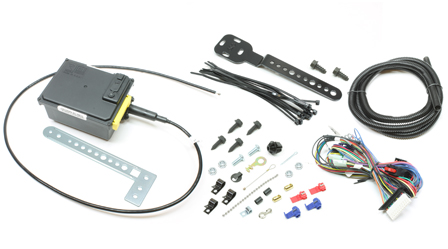
Click image to enlarge...
Installation Manuals

Universal Aftermarket Cruise Control Service Parts
Global Cruise Hardware
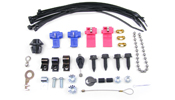
Cruise Control Module
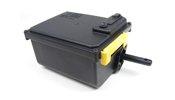
Cruise Harness Assembly
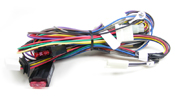
43" Cruise Cable Assembly
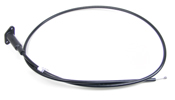
Cable Bracket Assembly
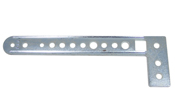
Global Cruise Accessories and Service Parts
Replacement Magnets, 10-pack
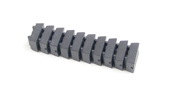
Magnet Package with Tie Strap
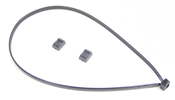
Replacement Clutch Switch
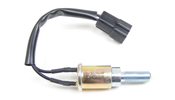
Speed Signal Generator
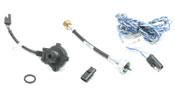
Form #59A-02361G
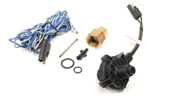
T-Bar Adaptor
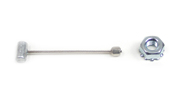
Clutch Disengagement Switch
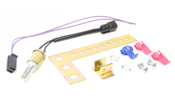
VSS Divider (Divide By 2)
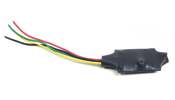
VSS Divider (Divide By 4)
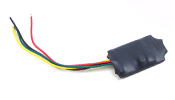
Relay Package
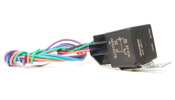
Frequently Asked Questions
Global cruise application.
Q: Can I install Rostra's Global Cruise system on a motorcycle or ATV?
A: At Rostra, we love seeing the inventive ways in which our customers apply products that we manufacture to a variety applications. But, while a number of online forums exist that detail the multitude of installation options for our products on non-passenger vehicle modes of transportation, due to safety concerns surrounding these installations, we do not actively support these applications. Our technical support is provided through extensive real-world testing that at this time does not include working with said vehicles.
Q: When installing Rostra's Global Cruise system, can I mount the cruise control servo motor to the vehicle's engine?
A: When selecting a mounting location for your Global Cruise servo motor, it is best to take into consideration the deteriorating effects heat and vibration have on all vehicle electronics. Because of the amount of heat generated by a vehicle's engine and exhaust manifolds, we recommend mounting the Global Cruise servo motor as far from these two as possible as heat and vibration damage to the motor can result in our standard 3-year/36,000 mile warranty being voided. For a list of places that we do not recommend, please see below:
- Underneath the vehicle's fender exposed to the elements
- Underneath the vehicle itself exposed to road debris
- Directly to the vehicle's engine with heat and vibration
- In any location with the cable points towards the ground
- Near sharp, hot, or moving objects (pulleys, CV shafts, etc...)
- Near the vehicle's ignition coil (no closer than 10" (255mm)
- Within the passenger compartment (see Q/A below)
- Where it will interfere with vehicle maintenance/service checks.
Q: Can I permanently mount Rostra's Global Cruise servo motor on the inside of my vehicle?
A: The short answer - Yes, this is a possibility. While mounting the Global Cruise servo motor within the passenger cabin is certainly an option, installers are warned that the motor itself makes a fair amount of noise as it pulls the vehicle's throttle back and forth to maintain highway speeds. While hot rod owners may never notice the sound of the motor, more modern vehicles that include ample sound dampening from road noise likely will.
Q: The throttle cable attached to Rostra's Global Cruise servo motor is too long for my application. Can I cut it?
A: No. Cutting the throttle cable attached to the Global Cruise servo motor due to its length is highly inadvisable as it can directly impact the throttle cable's ability to move freely into and out of the servo motor. Instead, the servo motor can be mounted in such a way that the cable can be looped to create a shorter distance. Please note that this loop must have greater than a 6-inch diameter.
Q: Do I need to connect the Dark Blue Tachometer (TACH) or Light Green Neutral Safety (NSS) wires from the Global Cruise system's main wiring harness for cruise control operation?
A: While neither the Tachometer Signal wire (for manual transmission vehicles) or Neutral Safety wire (for automatic transmission vehicles) need to be connected for cruise control operation, we highly advise that they are as they provide over-rev protection by disengaging the cruise control system in situations where the engine could be accidentally "knocked" into neutral while driving (NSS/automatic transmission), or when the clutch pedal is depressed (TACH/manual transmission).
Global Cruise Accessories
Q: My vehicle is not equipped with an electronic vehicle speed sensor (VSS). Can I still install Rostra's Global Cruise system?
A: Absolutely! The Global Cruise provides an incredibly dynamic way of controlling speed on vehicles equipped with a mechanically-operated throttle - whether or not they include a pre-existing and/or usable VSS. For vehicles that fall into this category, we manufacture a number of speed signal generators that tell our cruise control how fast your vehicle is moving so that it can effectively hold the speed for you. For Chrysler/Mopar and Chevrolet vehicles manufactured anywhere from the early 1950's to late 1980's (when electronic VSS became standard), we offer part number 250-4160 - a device that is installed between the transmission and speedometer cable to generate a usable speed signal. For vehicles where underbody space is an issue and the transmission rests closely to a crossmember or the vehicle's body, we also offer the same equipment with a speedometer cable extension as part number 250-4153 . For Ford and all other vehicle makes, we offer part number 250-4165 - a sensor that attaches to the vehicle's body and a package of magnets that attach to the vehicle's driveshaft or CV shaft. When the shaft spins and the magnet(s) pass by the sensor, a speed signal is generated.
Rostra cruise control systems are only validated on vehicles available in the United States and Canada.
For the best in driving experience, choose a cruise control from Rostra, the leader in cruise control technology. Contact us today for purchasing information.
Postal Code:
Sign me up for your newsletter with the latest technical tips and new product releases.
Rostra is a leading manufacturer of automotive comfort, safety, and convenience accessories including electronic cruise control systems, vehicle speed limiters, backup camera relocation kits, LED lighting, exterior vehicle camera systems, automotive lumbar supports and seat heaters, driver alert systems, and more.
Rostra: 2351 J. Lawson Blvd. Orlando, FL, 32824
WHAT OUR CUSTOMERS SAY
" Just what I needed for my 1962 Thunderbird! Before installing this, I would get leg cramps holding the throttle constant while cruising, I swear the throttle return spring was originally a bed spring. Installed this beauty before taking my trip down RT 66 in 2015. Finally, 7500 miles in comfort! "
Jim H. - United States
250-1223 Universal Electronic Cruise Control
" This is great. It installed pretty easily. I put it on my F-350 so I can park easier since my front camera is obstructed my LED lights and a light bar. I easily installed the sensors in the air dam below the bumper. "
Schawn D. - United States
Forward-Facing Parking Sensor System
" This installed very easily. I highly recommend it for anyone who needs this feature to make their car seat more comfortable. But this does require a high level of car handy skills, as you need to significantly disassemble a car seat. "
Sam G. - United States
Universal Lumbar Support System
" I installed this in a 2018 RZR RS one. I ride in the winter and have only a windshield. I installed the seat heater and it keeps me very warm. "
Ron B. - United States
Universal Seat Heater
" Once installed, the Jeep is more noticeable as one would expect. This is a very good safety upgrade--I was surprised DRL's were not standard on Wranglers. I have had compliments from other Wrangler owners. "
Chessie T. - United States
Jeep Wrangler LED Fender DRL
Be the first to know about special promotions and product updates.
Newsletter Signup
© 2024 Rostra Accessories
- Vision Cross-Reference
- Privacy Policy
- About Rostra

- Forum Listing
- Marketplace
- Advanced Search
- Model Specific Jeep Discussions
- Wrangler JK (Model years 2007–2018)
- JK Technical Discussion
cruise control on manual transmission
- Add to quote
So what happens if you are in cruise control with a manual transmission and the vehicle can no longer maintain the desired speed in the current gear (like going up a steep hill)? Does cruise control shut off? I am just trying to figure out why my cruise control cut off today. I was driving on the highway in cruise control, and all of a sudden I started slowing down. The "Cruise" light was still lit, but it was no longer trying to maintain speed. My guess was that a gust of wind caused the vehicle to no longer be able to maintain its speed and so it shut off cruise control.
I have noticed that before. If your engine cannot downshift (manual tranny) I believe it just drops out the cruise. Your cruise does stay on, but you have to reset the speed.
There's a rev range that will act the same as hitting "cancel" if you drop below or exceed the limit
Anyone know what that point is? On my '07, sometimes my wife forgets about monitoring her speed and will still be in 6th going 55 lugging it up a hill when the cruise was set for ~70 sr so. I don't think I have ever seen it kick out of its own(not incl clutch, brake, cancel etc).
It sometimes does the same thing if you hit a really big bump. Mine cuts out when I go over the expansion joints where the highway meets the bridge if it's too big of a jump.
Ok that might have been the reason. I did hit a bump, but I didn't think that was the issue at first because I drive on this road all of the time. Either way, I was just making sure that it was functioning properly, which it seems to be.
Answered my own question here: http://www.wranglerforum.com/f274/do-all-jeeps-do-this-cruise-control-question-151363-3.html
- ?
- 477.4K members
Top Contributors this Month

IMAGES
VIDEO
COMMENTS
At first, it might seem like a manual transmission and adaptive cruise control wouldn't work well together. We say this because, unlike regular cruise control, adaptive cruise control regulates the car's speed. And when the car slows down, the RPMs will drop, which would cause a manual transmission car to either bog or stall.
When turning on the cruise control feature in a manual transmission vehicle, ensure that your car is traveling at a steady pace and is in the right gear. After reaching the desired speed, activate this handy feature by pressing the "set" button located on the steering wheel. To adjust your cruising speed, use either the "+" or ...
You can cruise control with a manual transmission. It doesn't work half as well as it does with automatic transmissions as it still regulates the car's speed when you are cruising. But the system tends to disengage the moment you slow down or when you press the clutch. In that regard, while cruise control does indeed work with cars with ...
Yes, manual transmission cars can have cruise control. Cruise control is a feature that allows the driver to set a constant speed for the car, without having to keep their foot on the accelerator. This can be a helpful feature on long road trips or in traffic, as it can help to reduce driver fatigue. Cruise control is typically controlled by a ...
Vehicles with manual transmission require the drive to manually depress the clutch pedal and shift into the gear they need. If the vehicle has cruise control, this will automatically cause the cruise control to disengage. Therefore, manual cars will benefit from cruise control on highway/motorway speeds where one gear is used the whole time.
Yes, manual transmission cars can have cruise control. Modern systems are designed to maintain a set speed, even in manuals. The driver sets the desired speed, and the system adjusts the throttle to maintain it. If needed, pressing the clutch or brake will disengage the system.
In my manual car, it maintains the speed using the throttle and cruises until you touch either the clutch or the brake. It can do it in any gear but you tend to only use it in the higher gears obviously, and as soon as you change gear, it releases until you re-activate it. 2. Vast-Combination4046. • 2 yr. ago.
After all, cruise control is a feature that's typically associated with automatic transmissions. But as it turns out, manual cars can have cruise control too. In this article, we'll take a closer look at cruise control and how it works on manual cars. We'll also discuss the pros and cons of having cruise control on a manual transmission ...
On older manual cars with cruise control, the cruise control is disabled when you press the clutch. Whereas, on newer car models, you can change gears any time you want. However, some limit how long you can press the clutch in. For example, it will disable the cruise control if you press the clutch for more than 2 seconds.
Acura is now offering a six-speed manual transmission on the all-new 2023 Acura Integra, and the AcuraWatch system on that car includes Adaptive Cruise Contr...
Adaptive cruise control … and a manual transmission? It's possible. I've recently been driving around in a 2018 Ford Mustang GT that has a combination of two interesting features: a manual transmission and adaptive cruise control. You already know what a manual transmission is; if you don't know what adaptive cruise control is, it's a feature that uses radar to slow you down or speed ...
Adaptive Cruise Control (ACC) is present in most new manual cars. You can use it very safe as long as you don't need to change the gear. For driving on the highways, this feature is very useful. It helps the car to run in a less stressful way. To use Cruise control while driving, you need to have perfect knowledge about what type of Cruise ...
Adaptive cruise control uses a radar sensor to adjust your vehicle speed to maintain a set gap between you and the vehicle in front of you in the same lane. 2024 Mustang Owner's Manual. Ok. This view of the Owner's Manual contains the very latest information, which may vary slightly from the printed Owner's Manual originally provided with ...
Cruise control (also known as speed control, cruise command, autocruise, or tempomat) ... Cruise control is less flexible on vehicles with a manual transmission because depressing the clutch pedal and shifting gears usually disengages the cruise control. The "resume" feature has to be used each time after selecting the new gear and releasing ...
Cruise control work with a manual transmission just the same way it does with an automatic. ... In some vehicles with a manual transmission, pressing the clutch pedal to shift gears turns the ...
Step 1: Global Cruise SelectionPart Number: 250-1223. Part number 250-1223 (photos below) includes the universal Global Cruise servo motor, throttle cable, universal mounting brackets, wiring harness and hardware package for making electrical and throttle control connections. The servo motor mounts in the vehicle's engine bay.
Published: May 10, 2018. Introduced to the market only a few years ago, automated transmissions equipped with advanced cruise control features are now a staple of OEM offerings. Predictive cruise control systems use GPS data, onboard maps and cruise control to optimize cruising speed based on the topography of a truck's route.
I have an active order for a 2019 Sahara manual with adaptive cruise control. From what I can tell from the order guide, manual transmission won't do stop-and-go traffic for obvious reasons. It will keep your distance and adjust speed on the highway. Read that Ford deals with this by beeping then disabling cruise if engine RPM drops to low.
243 posts · Joined 2015. #2 · Feb 26, 2016. I have noticed that before. If your engine cannot downshift (manual tranny) I believe it just drops out the cruise. Your cruise does stay on, but you have to reset the speed. 2008 Wrangler 2 Door JK. 2016 Wrangler Unlimited Rubicon. My Rubicon Build Thread.
Basically the answer to my question about adaptive cruise control and manual transmission is that it's not a well thought out/implemented functionality. Sponsored . 2023 Ecoboost Premium Convertible, Oxford White, 6MT, 200A, Active Exhaust, Steeda Trident Gloss Titanium 19x10 (square) wheels with 285/35 Continental ExtremeContact Sport summer ...
Find Cruise Control Kits Manual Transmission and get Free Shipping on Orders Over $109 at Summit Racing! $20 Off $250 / $40 Off $500 / $80 Off $1,000 - FINAL DAY! ... Cruise Control, Chevy, Spark, Sonic, Manual Transmission, Kit. Part Number: RPC-250-9619. Not Yet Reviewed. Estimated Ship Date: Sep 20, 2024 if ordered today. Free Shipping;
6 Speed Maxima on Cruise Control. Proof it works for all those who thought any different.Can a manual car drive with cruise control? YES!
Haven't owned a manual in many years, now in this 2019 sport touring. Today while driving with the cruise control on, I popped it into neutral while approaching a stop sign and the engine revved right up, nearly to red line. Did it twice. Now generally speaking I get the concept that...